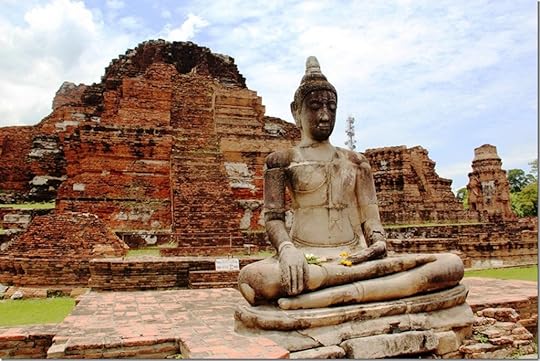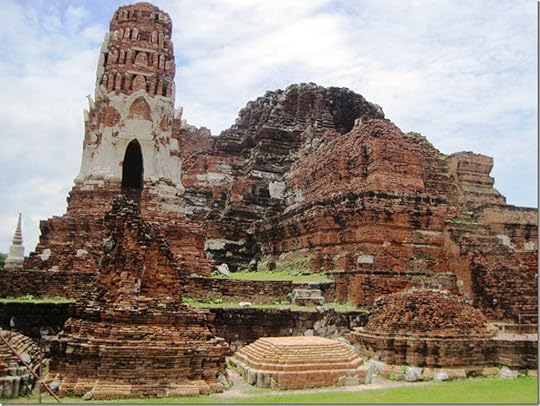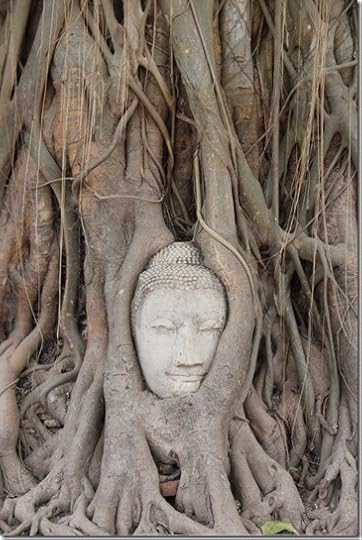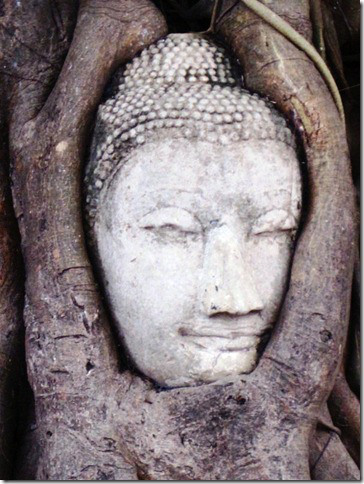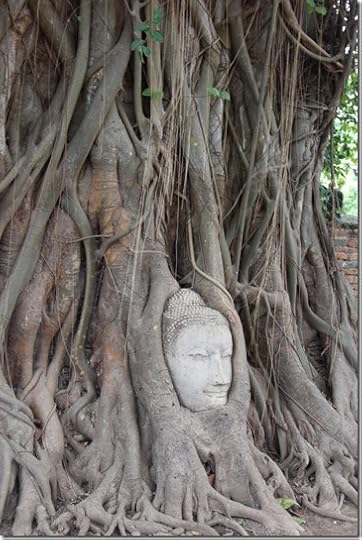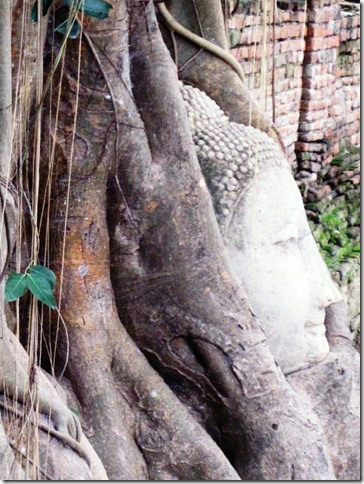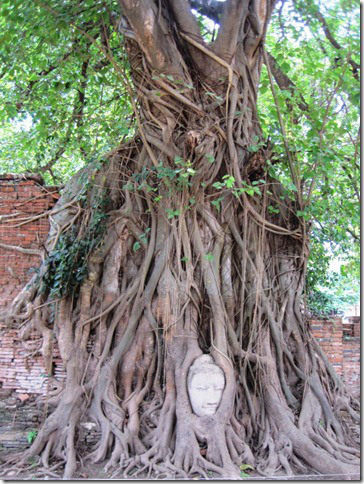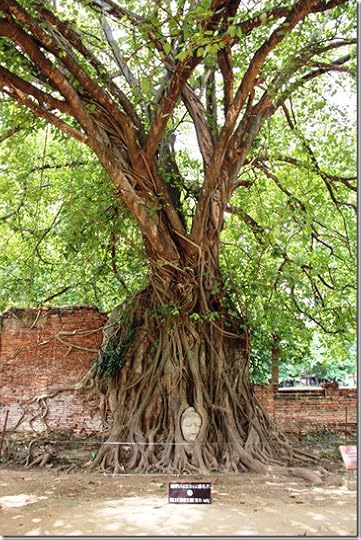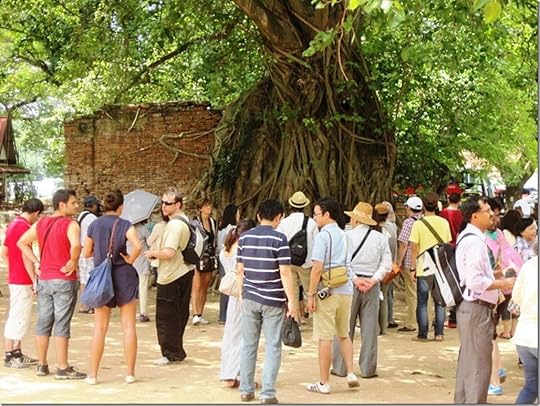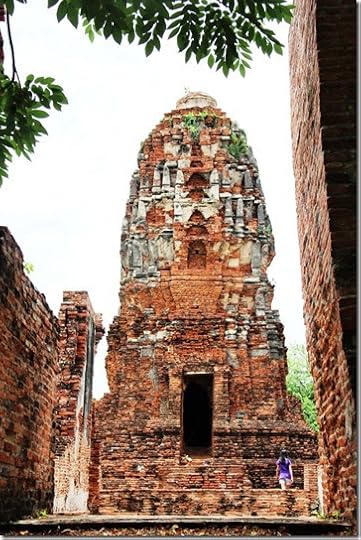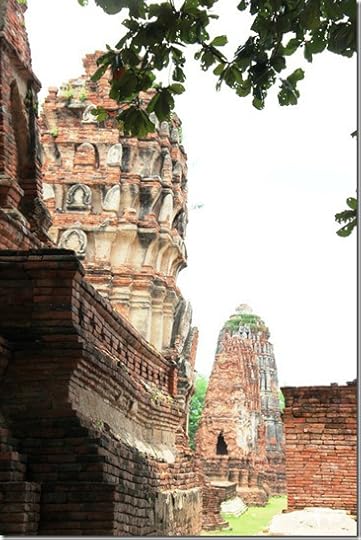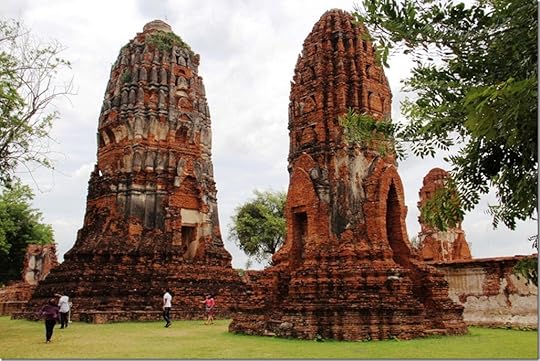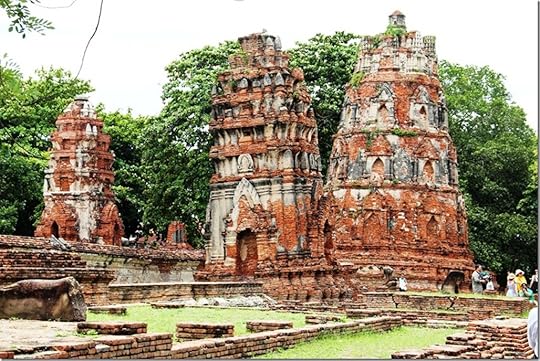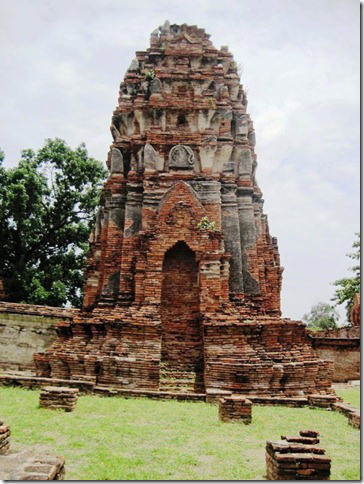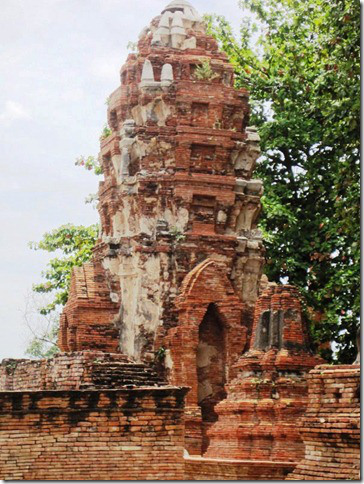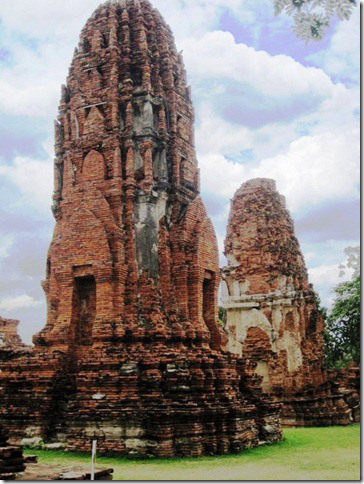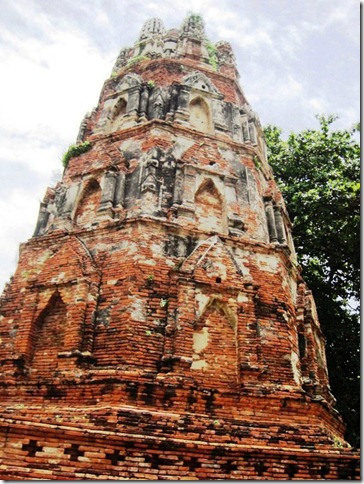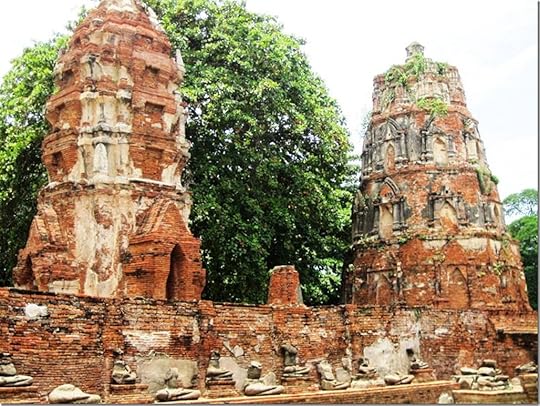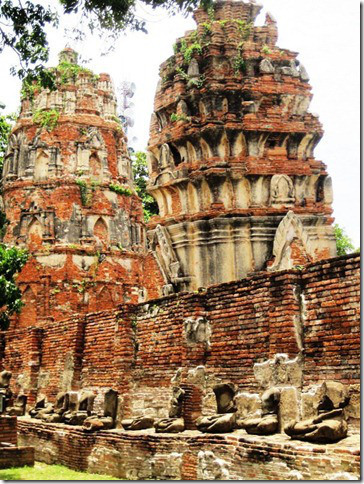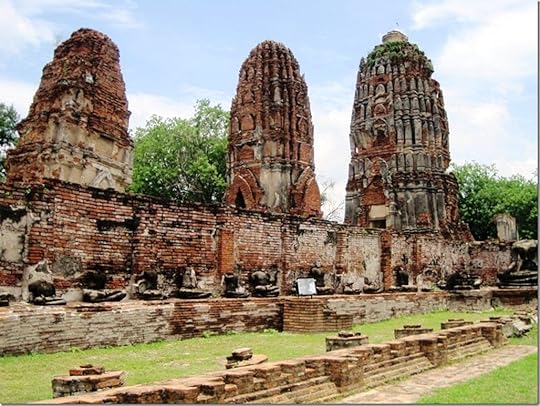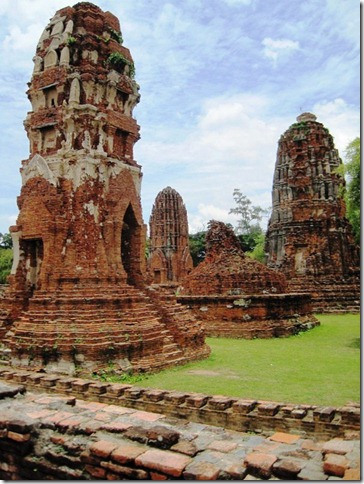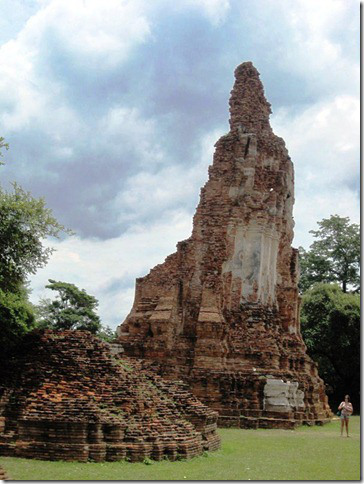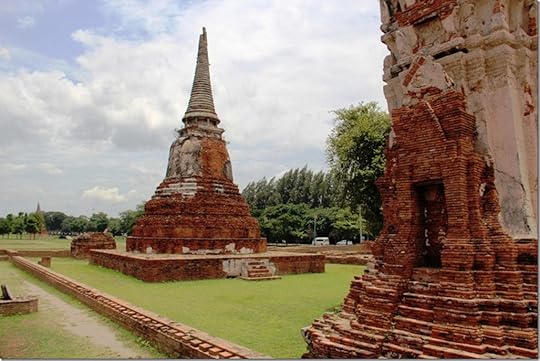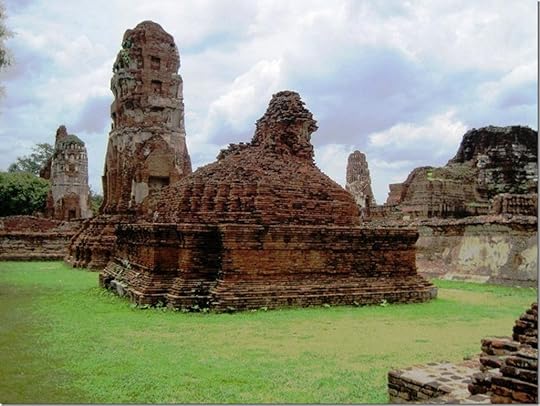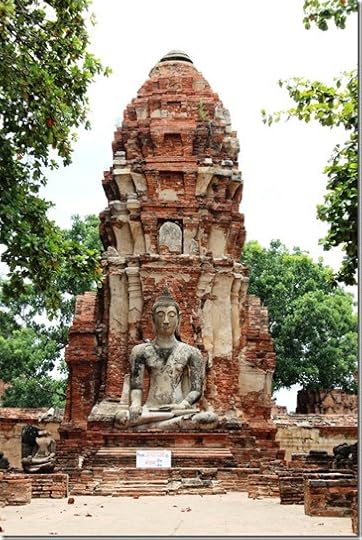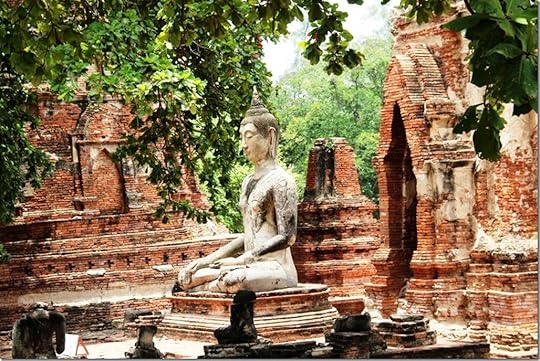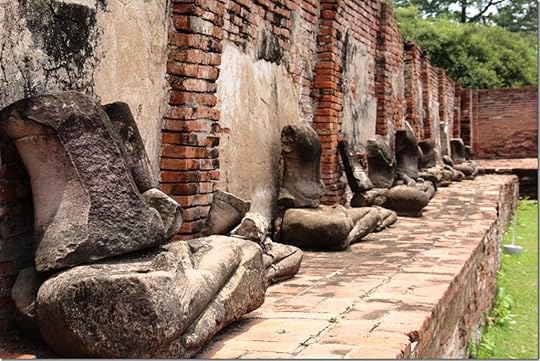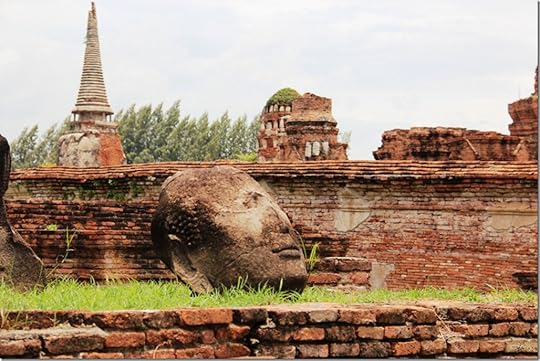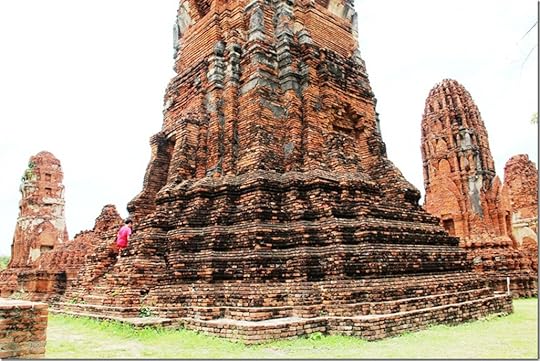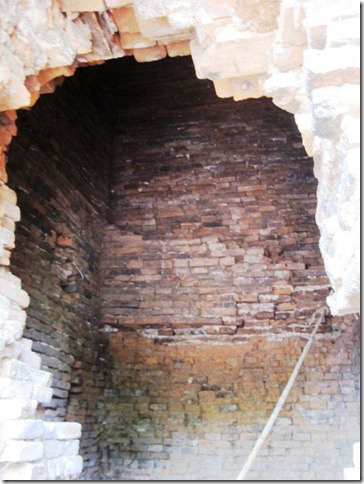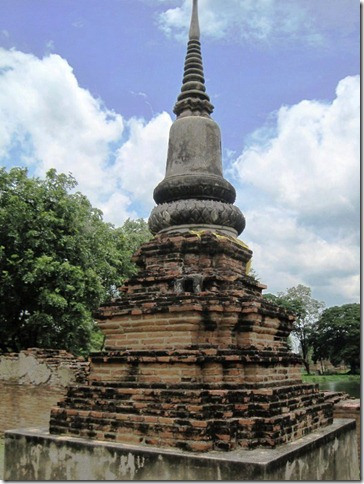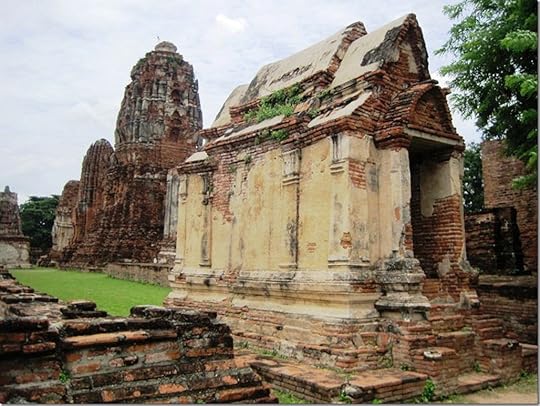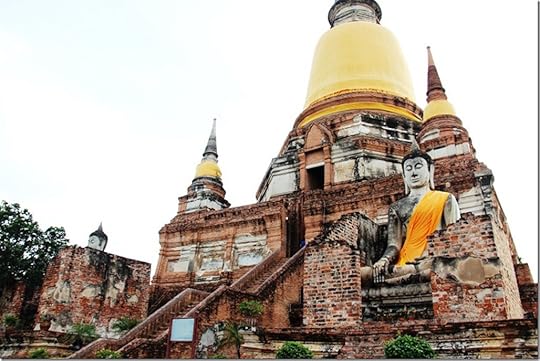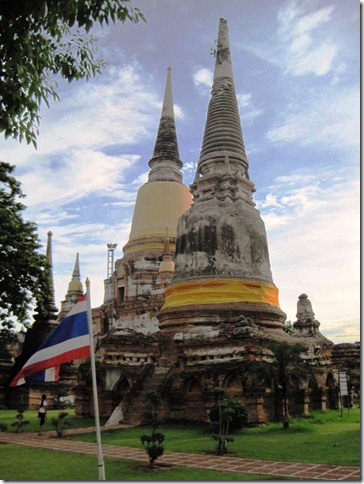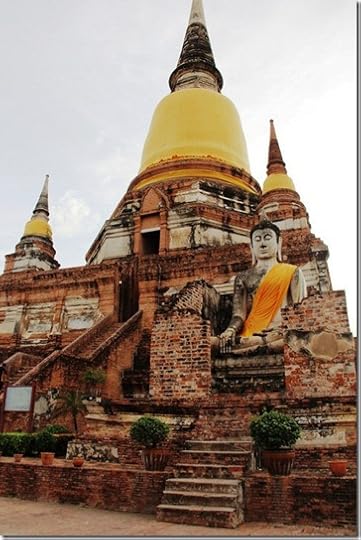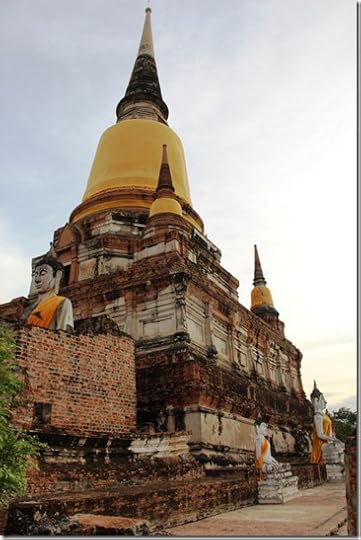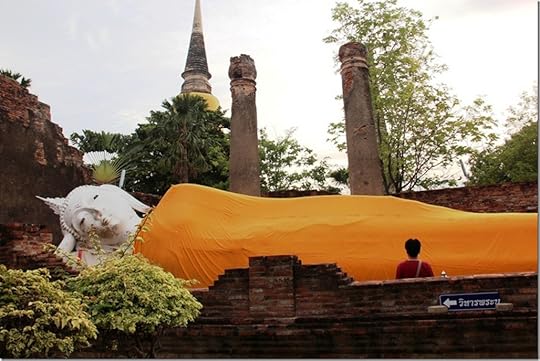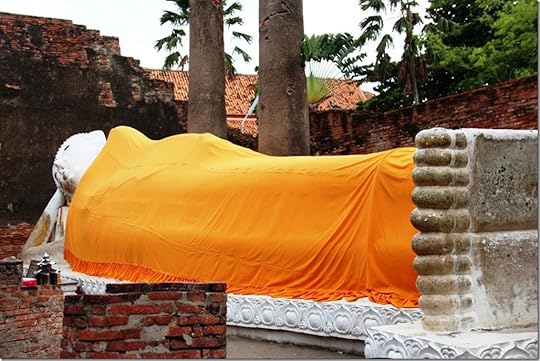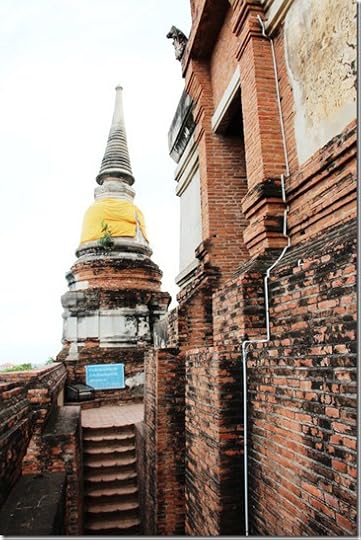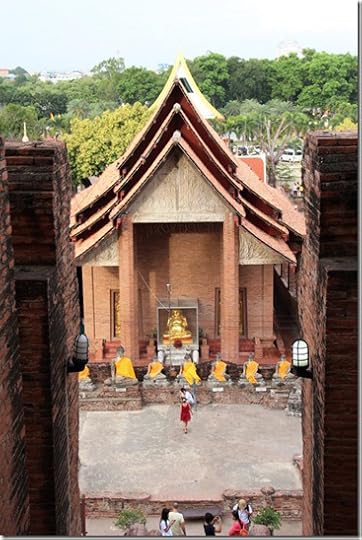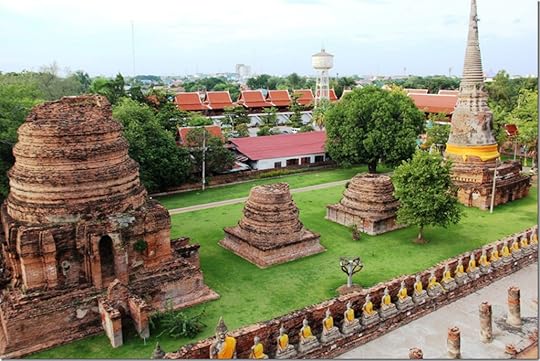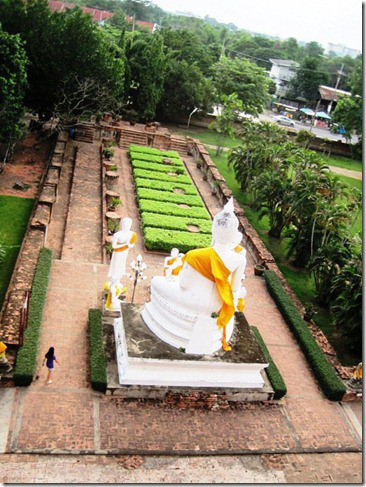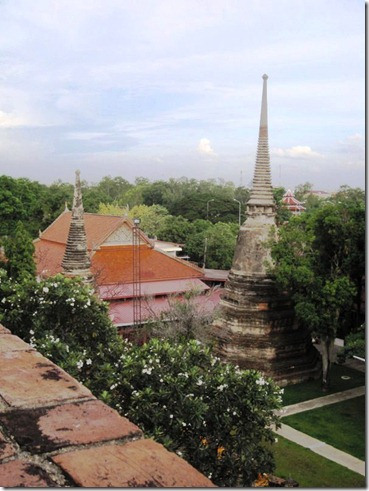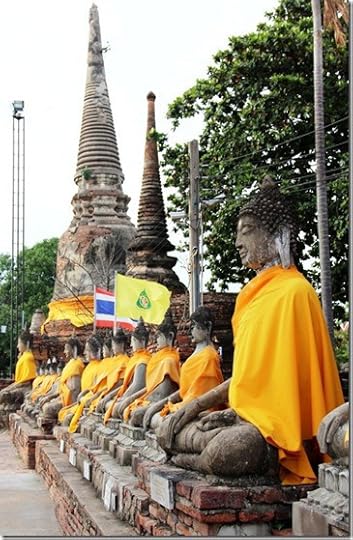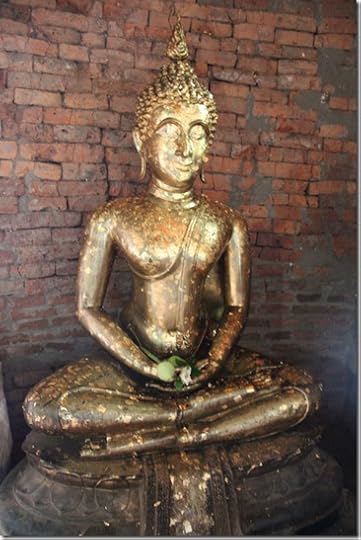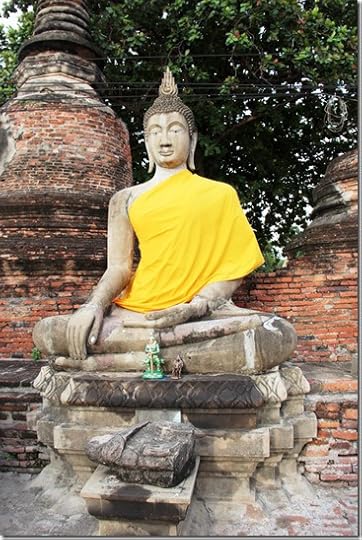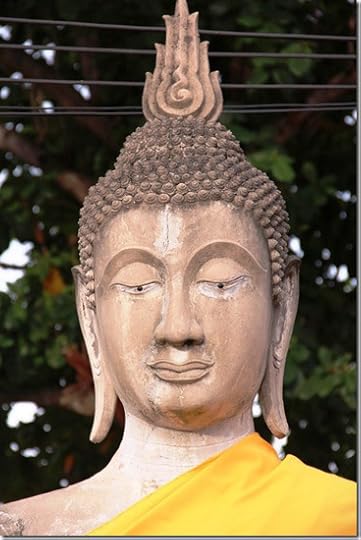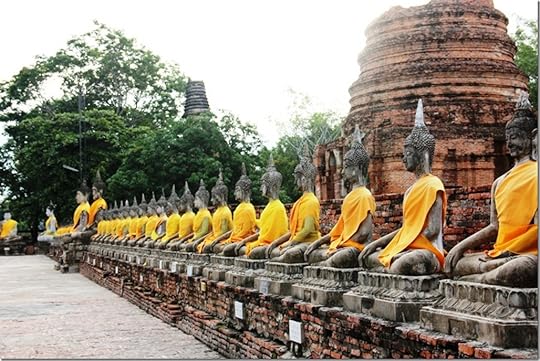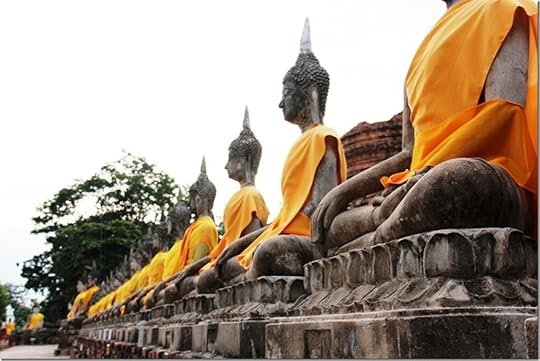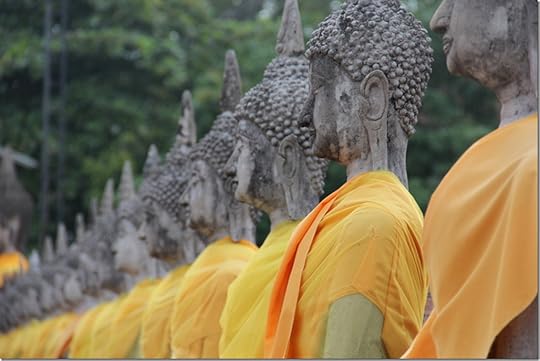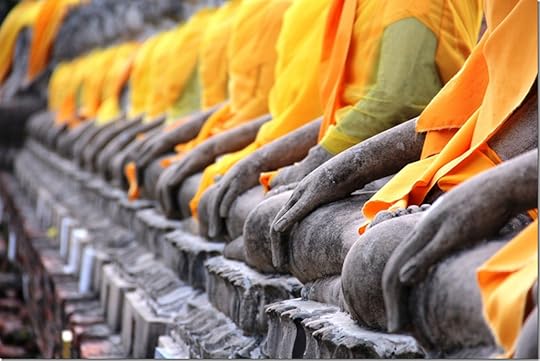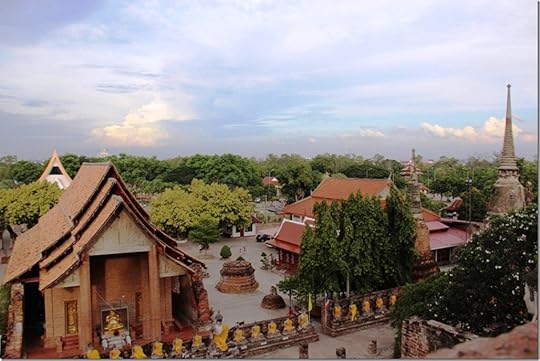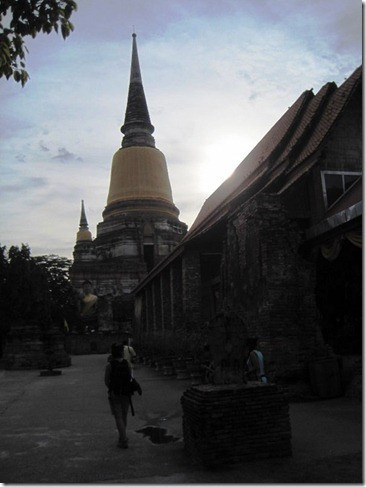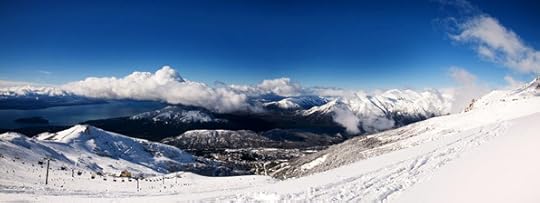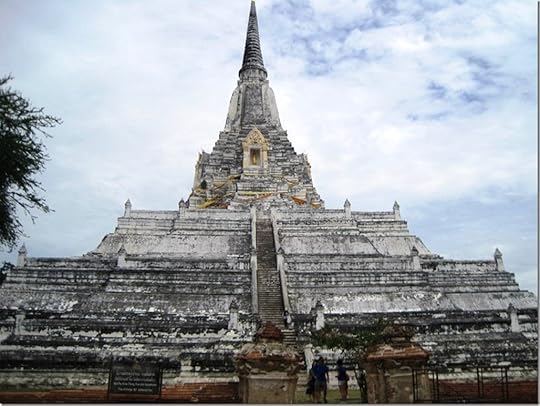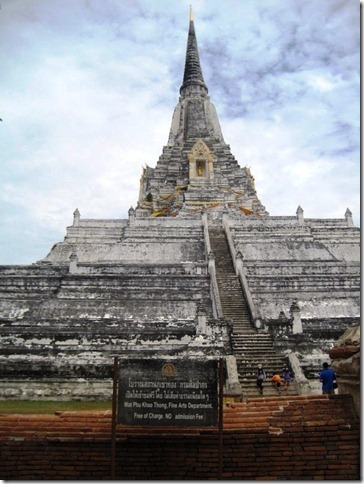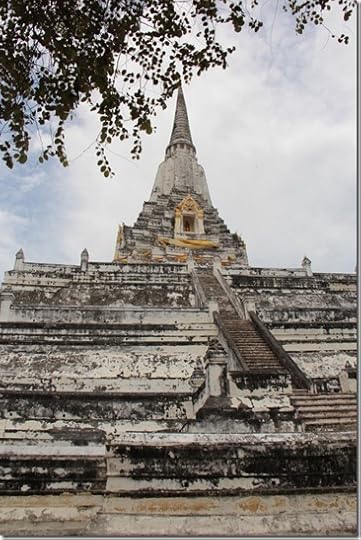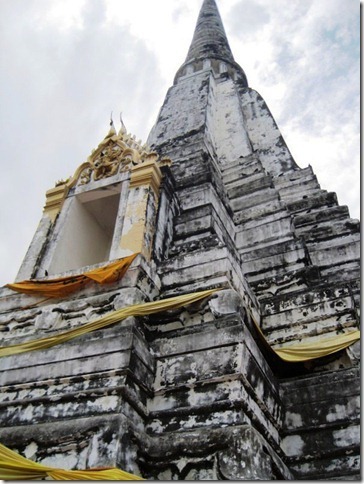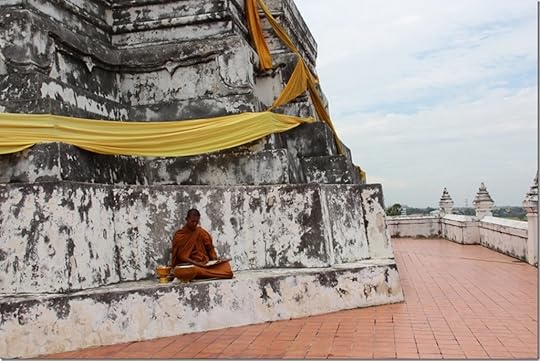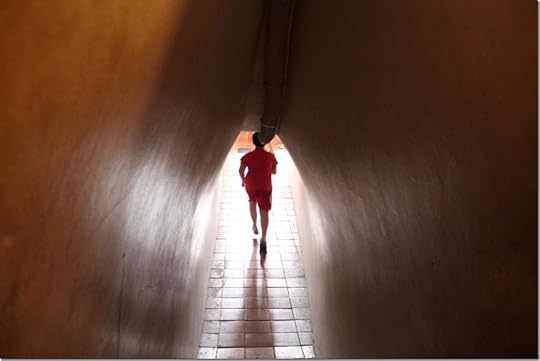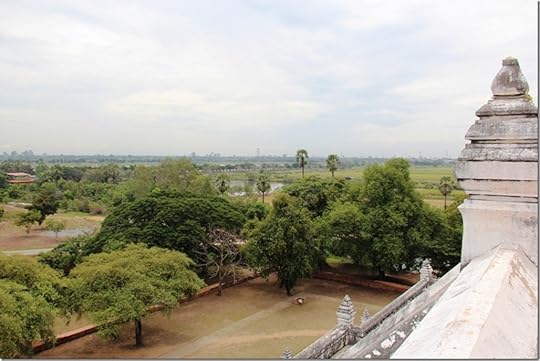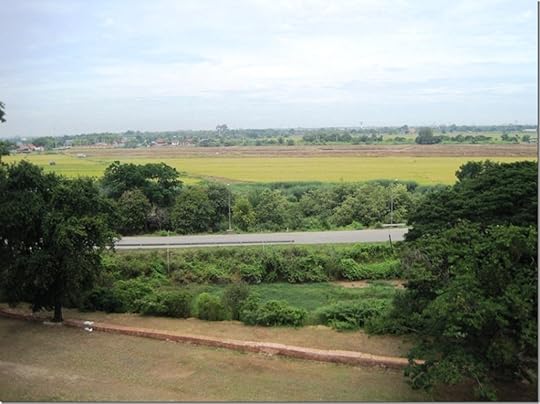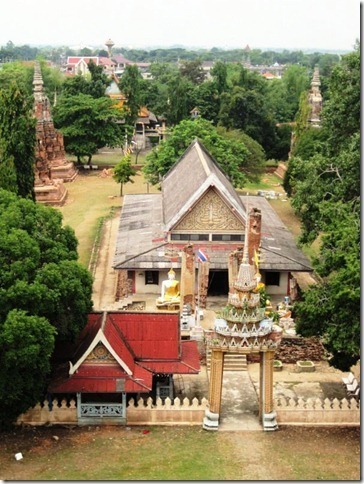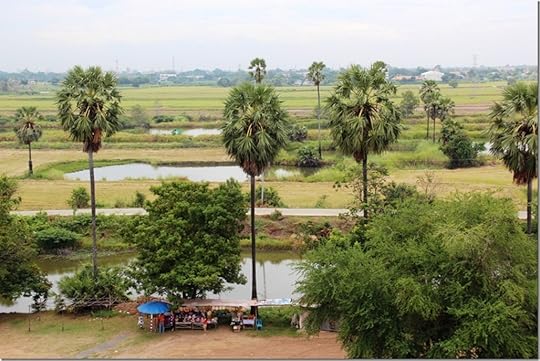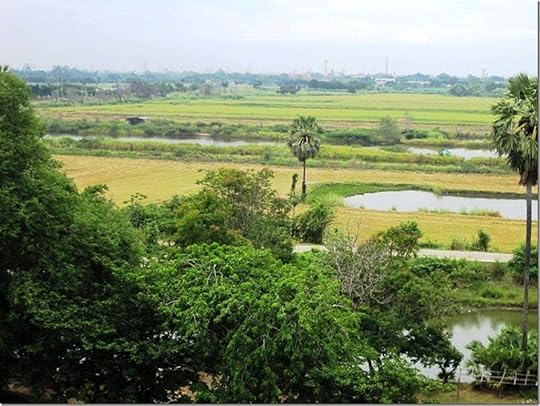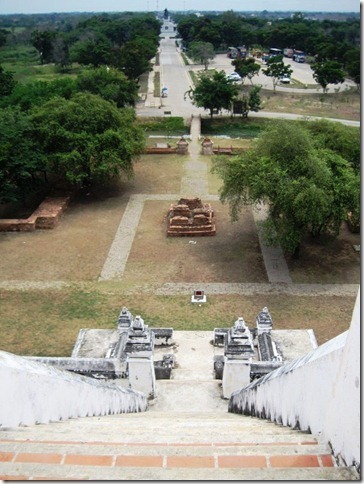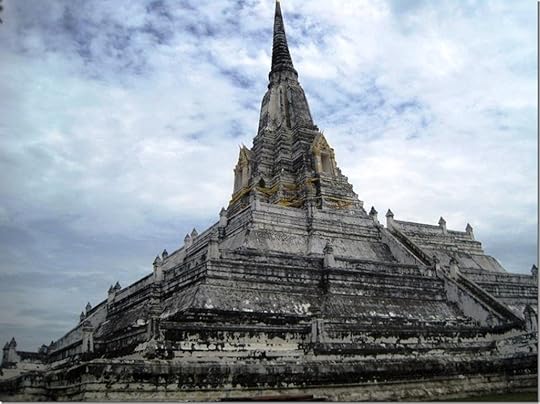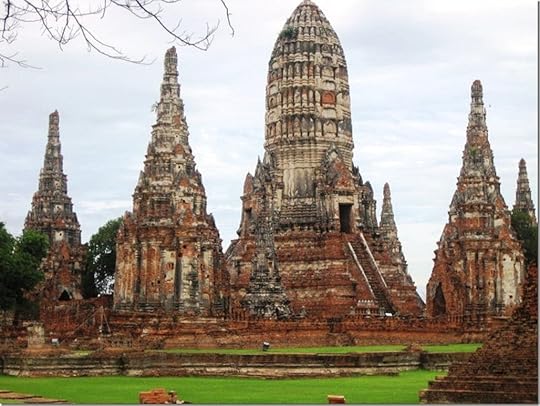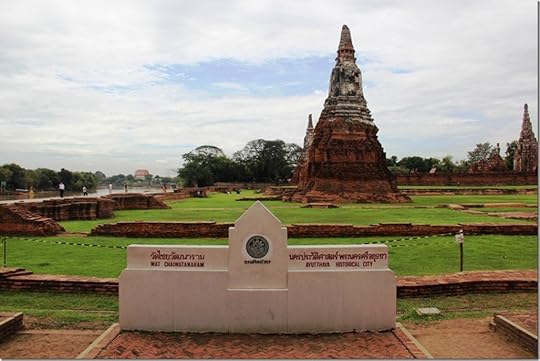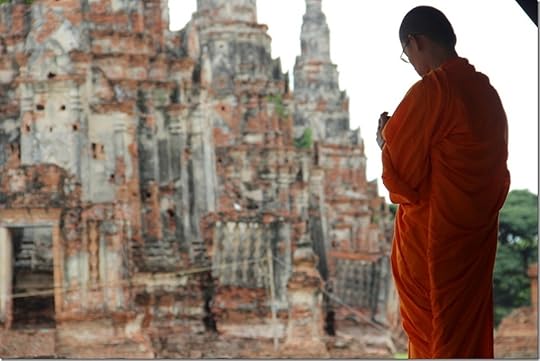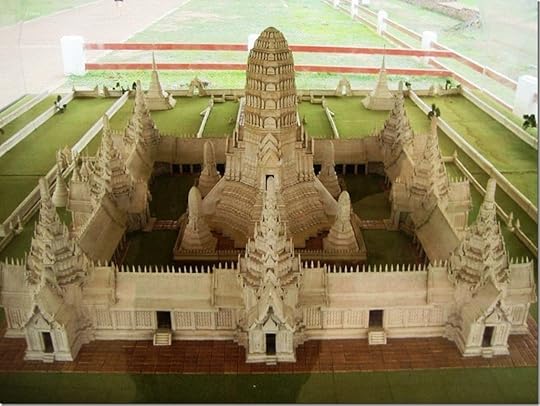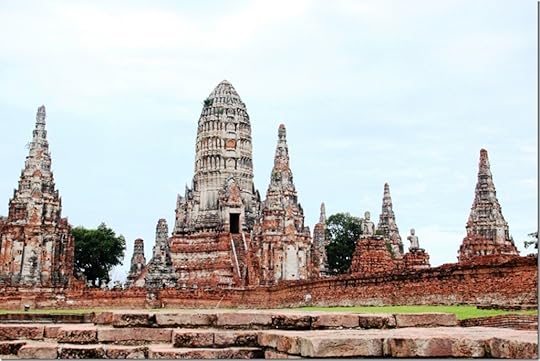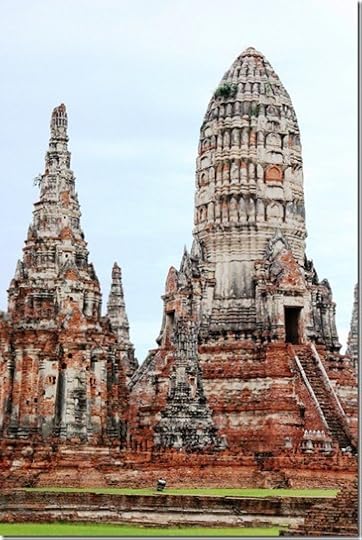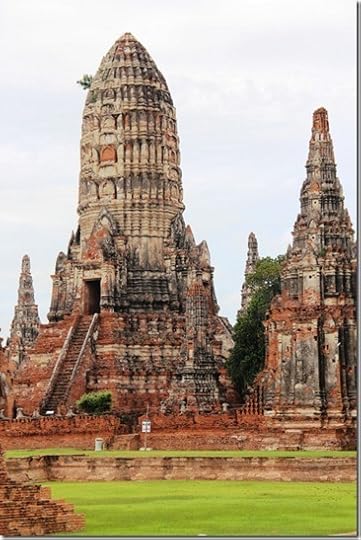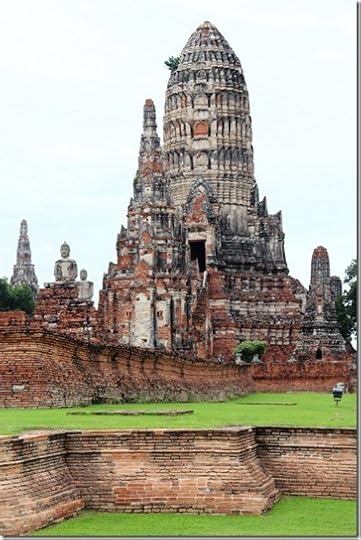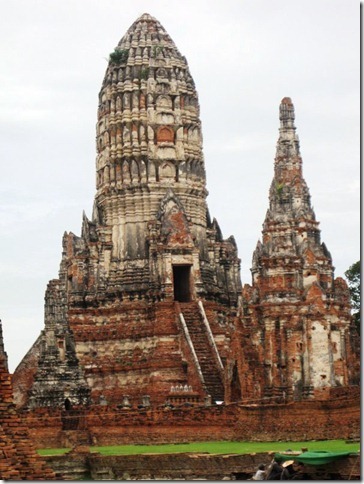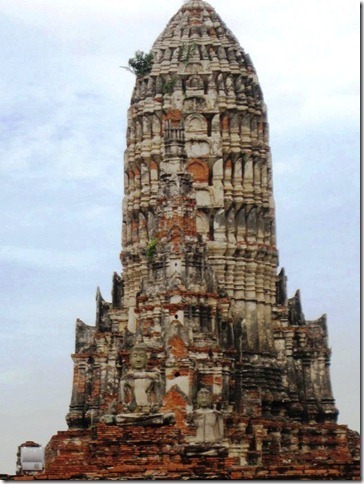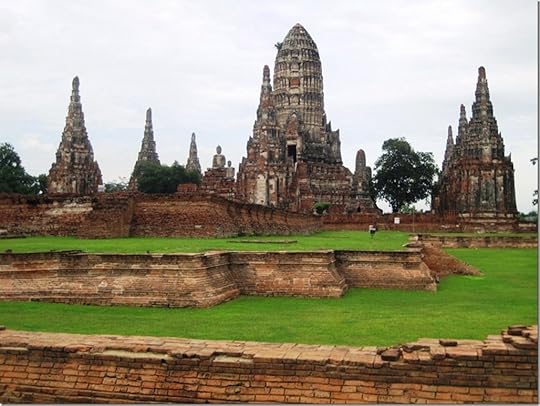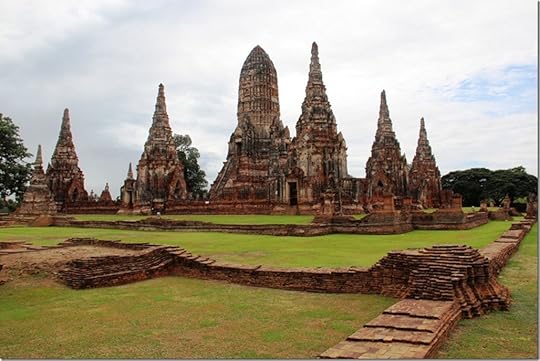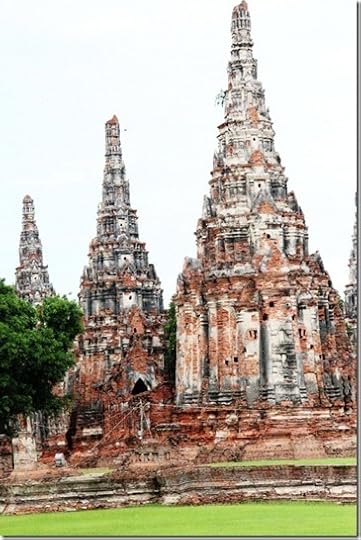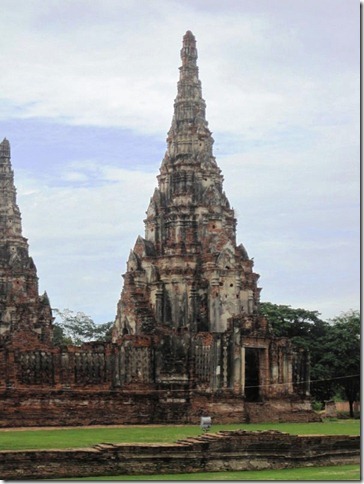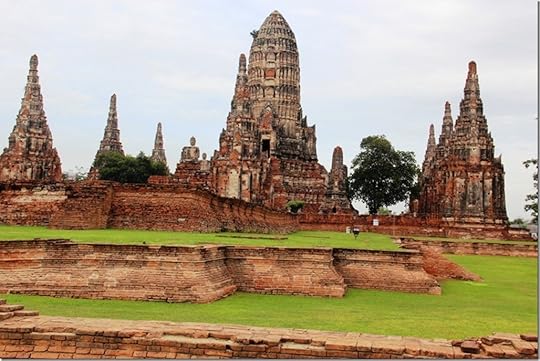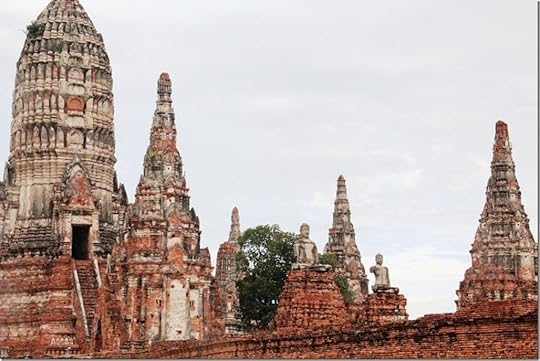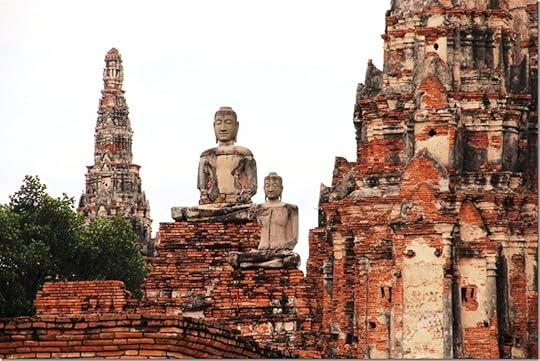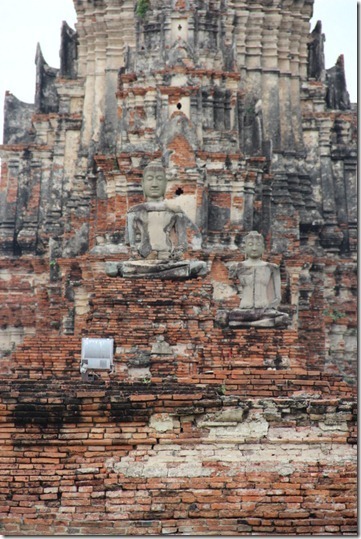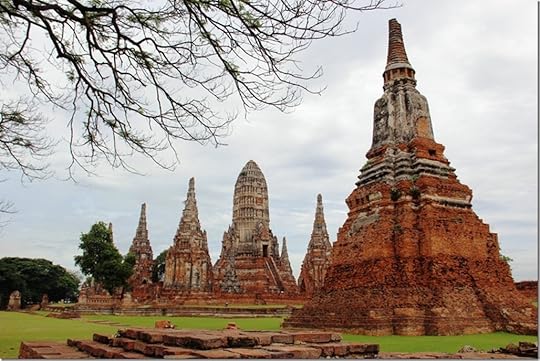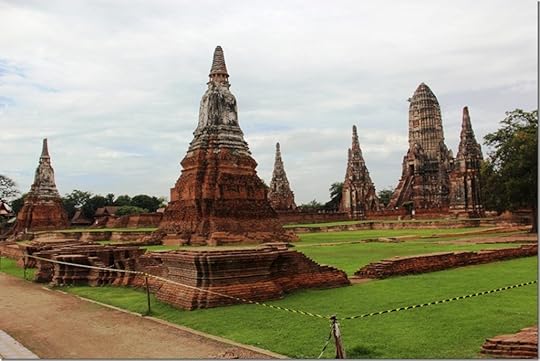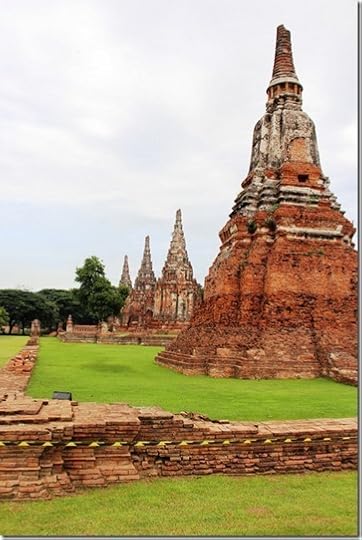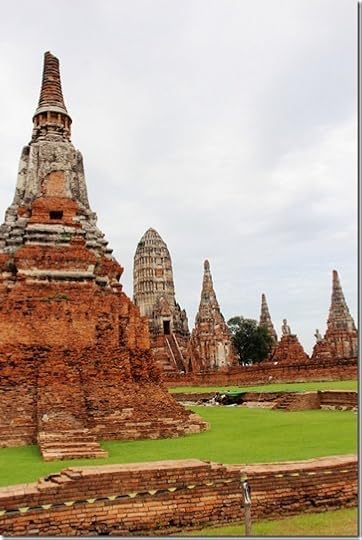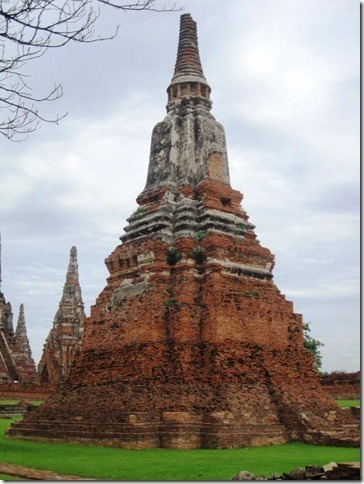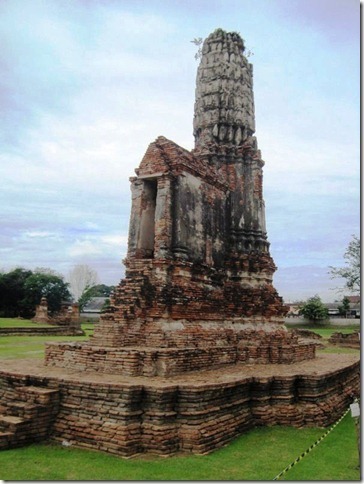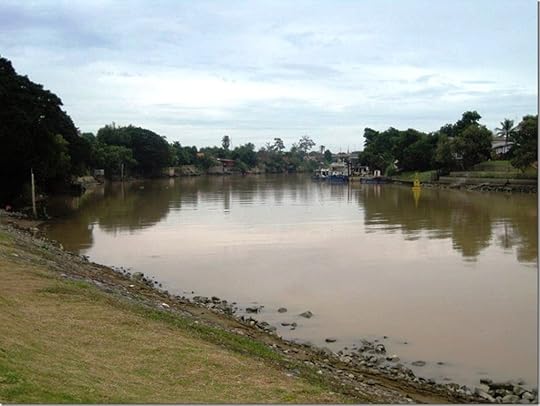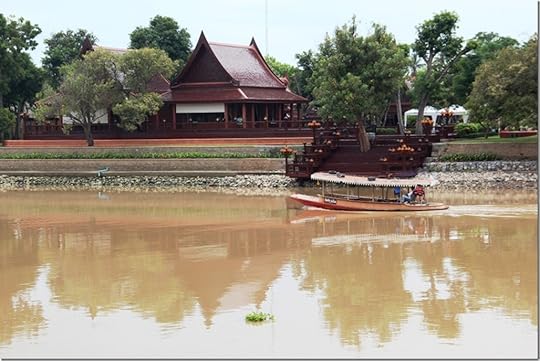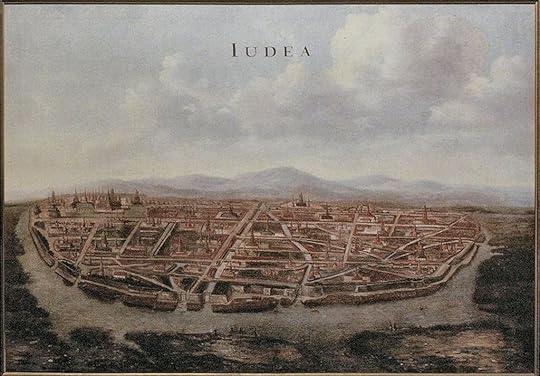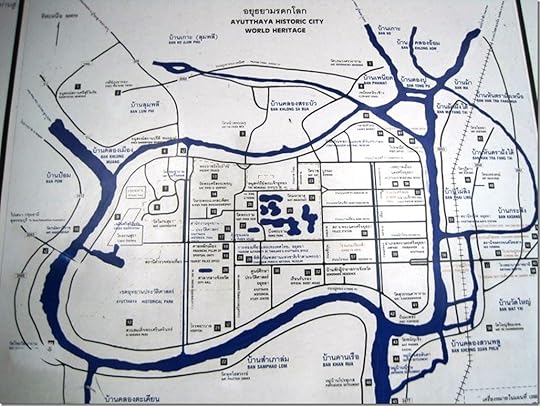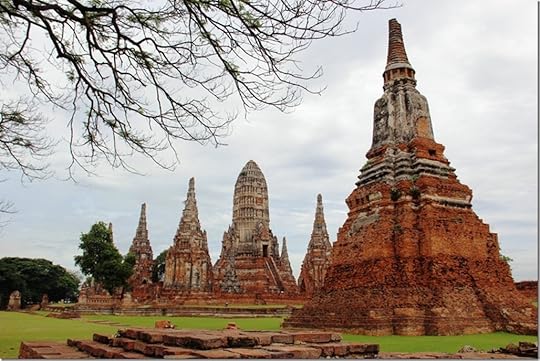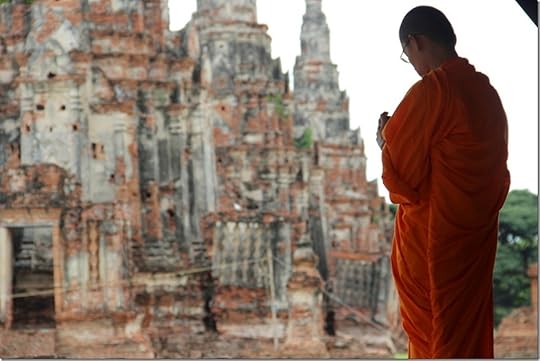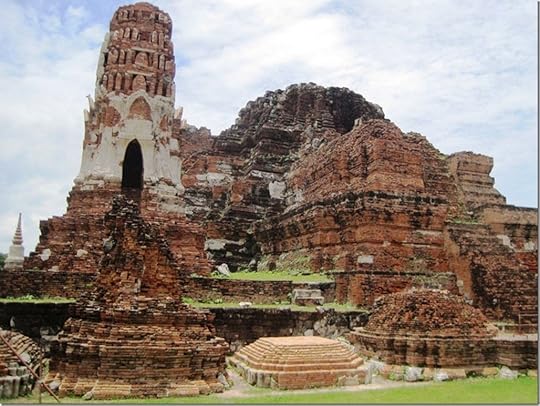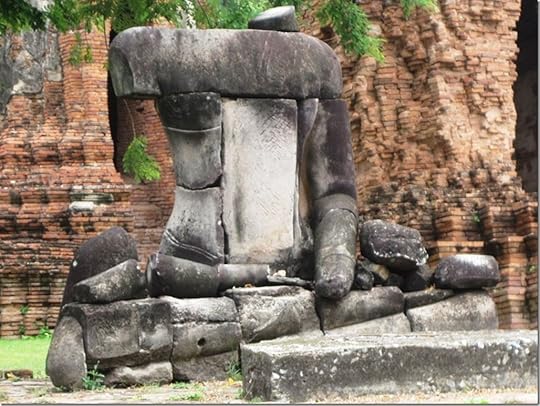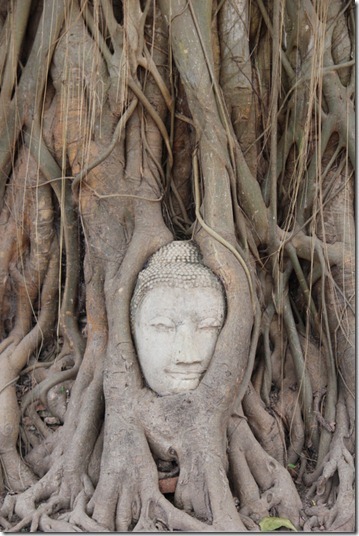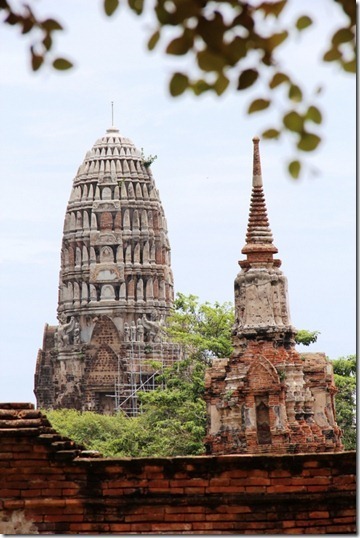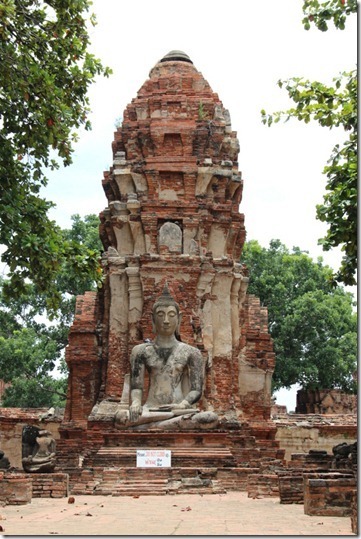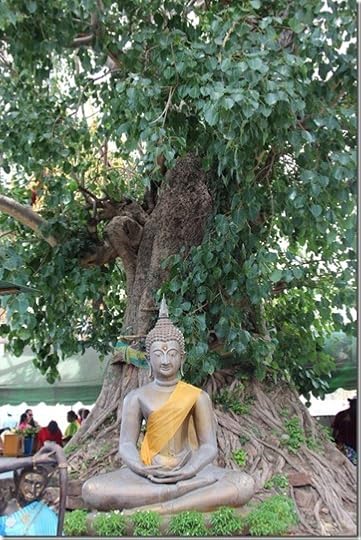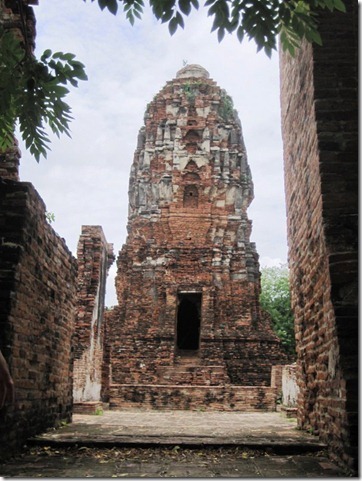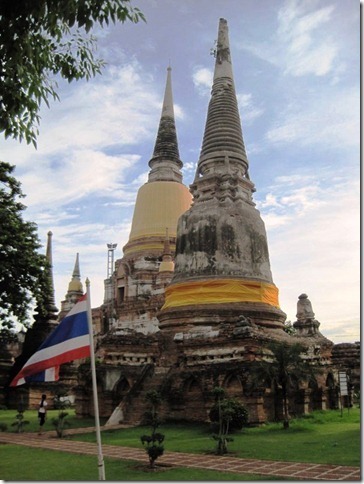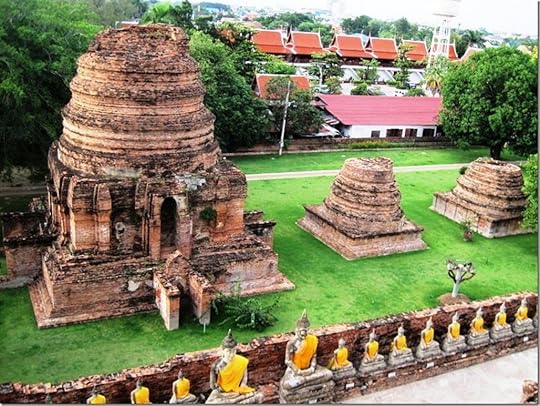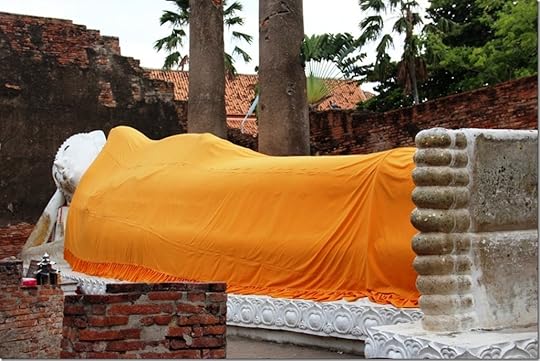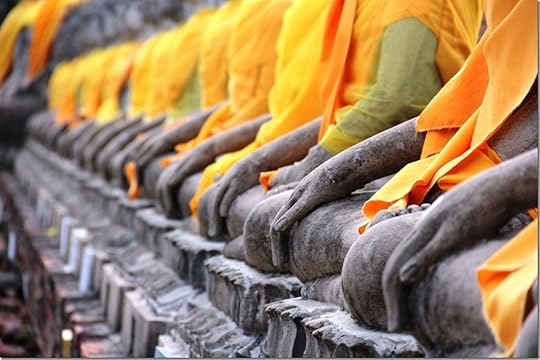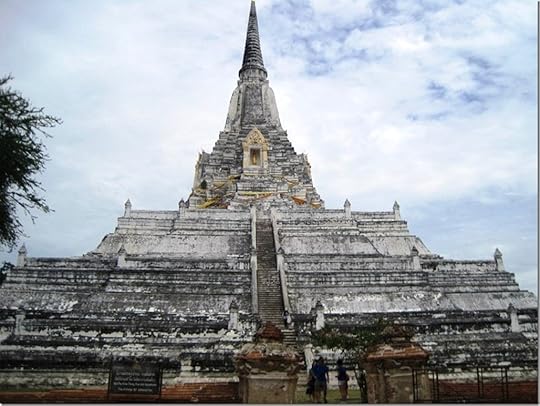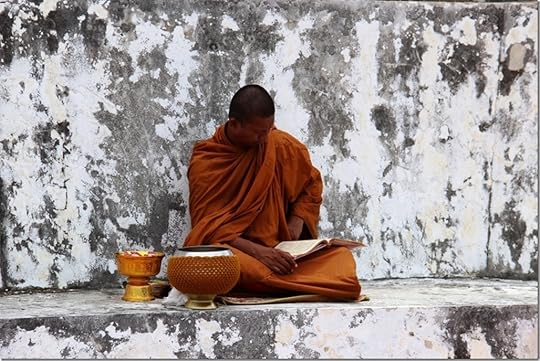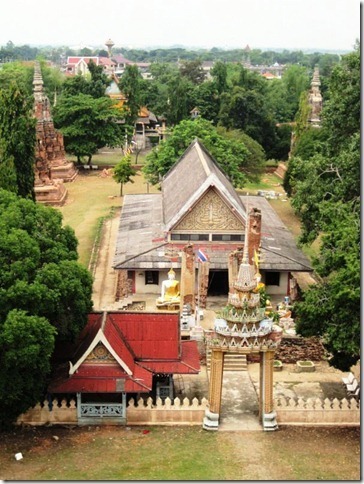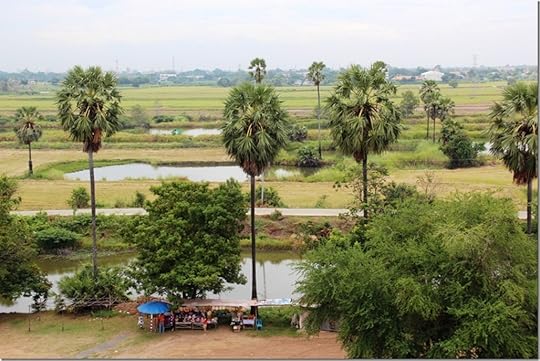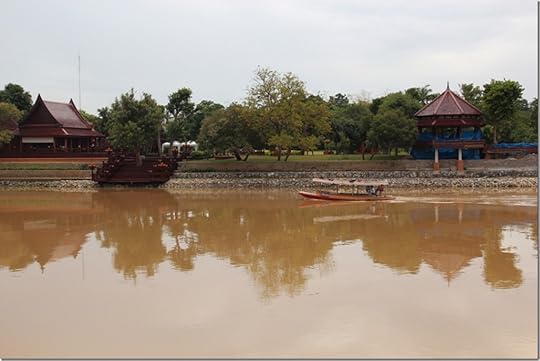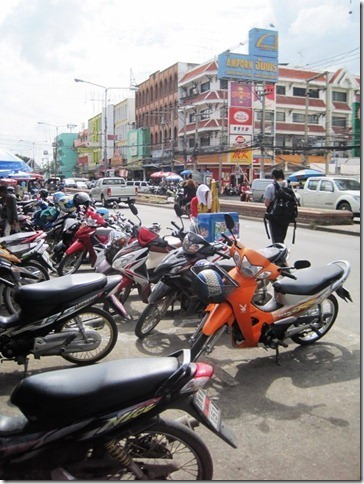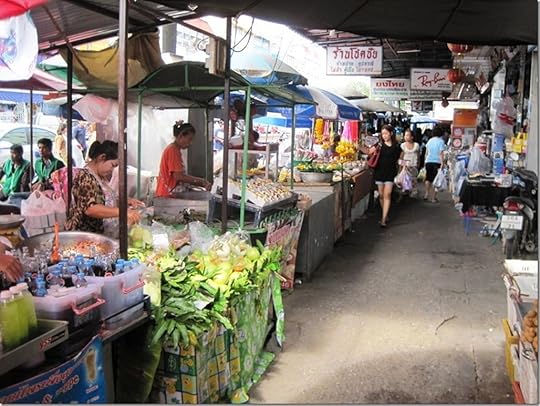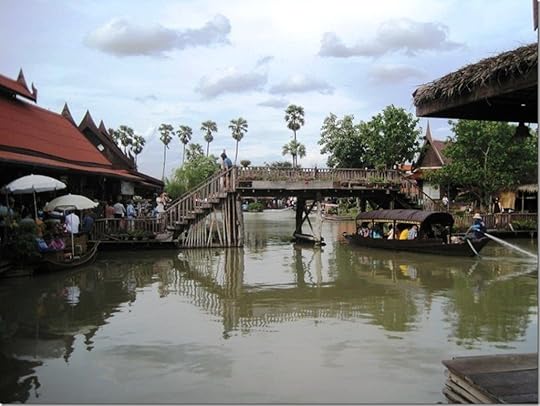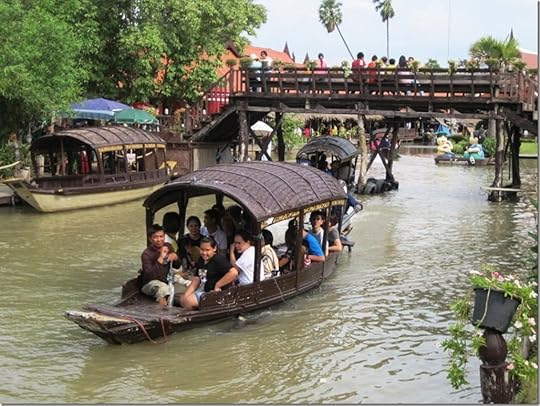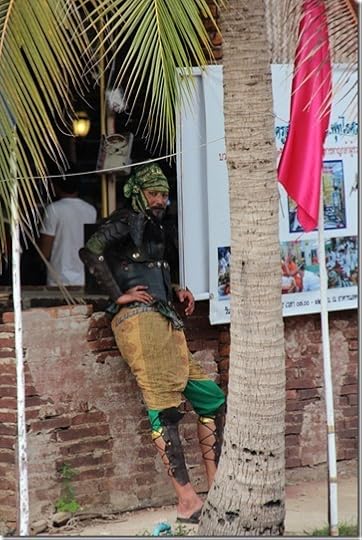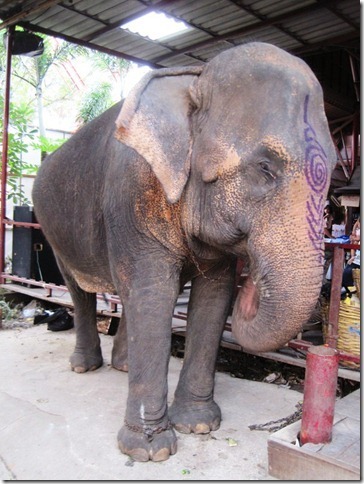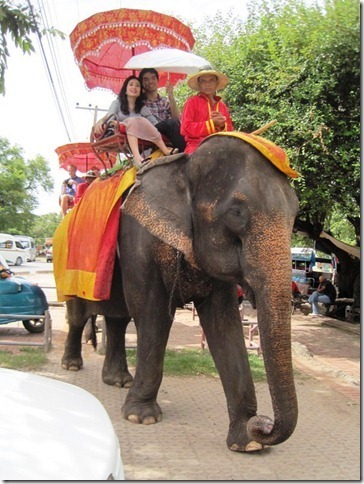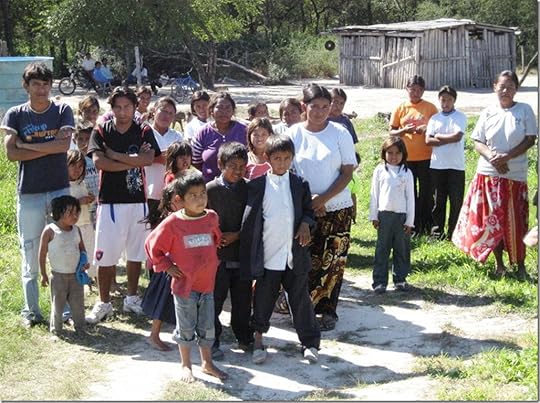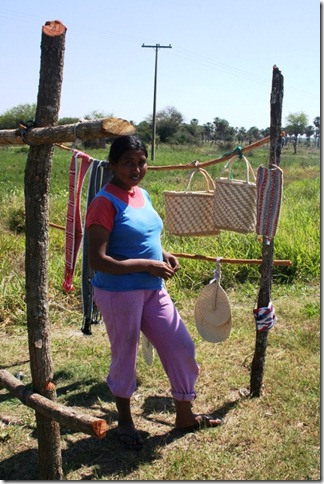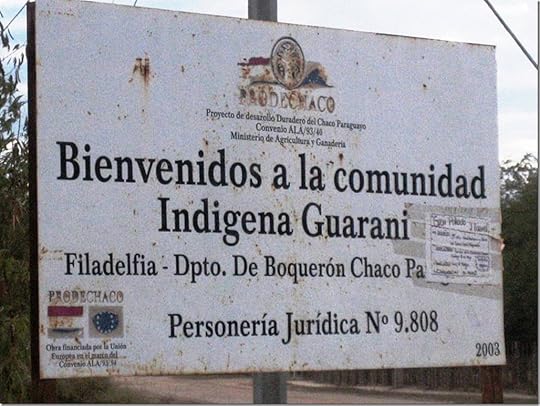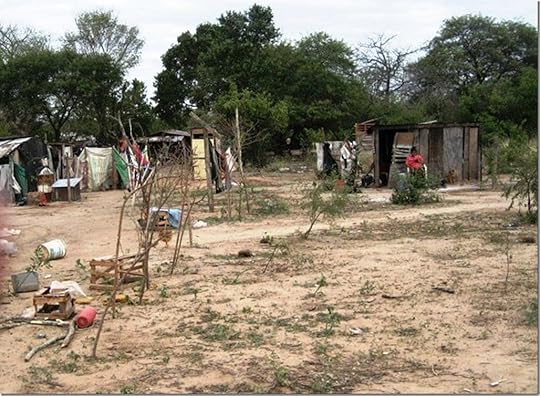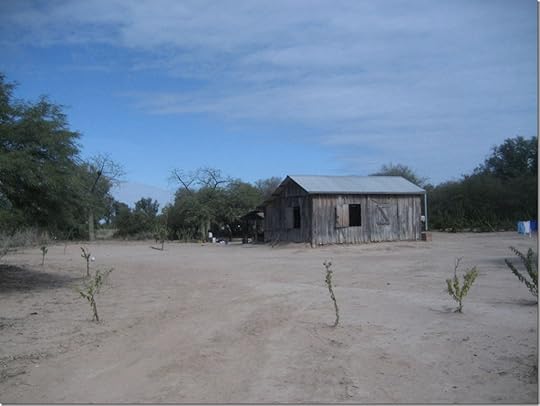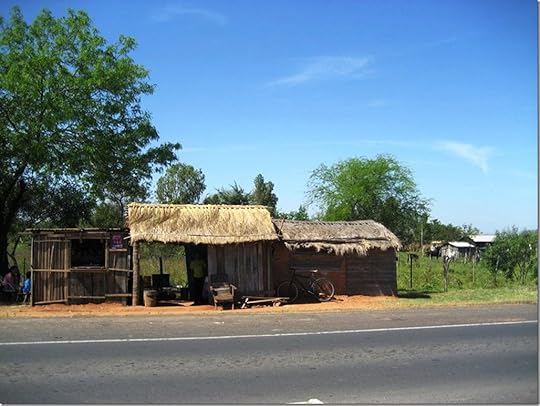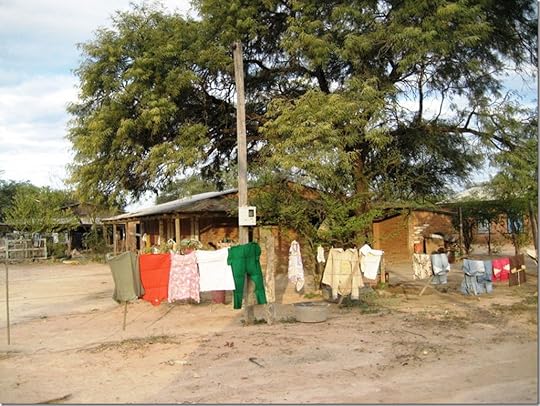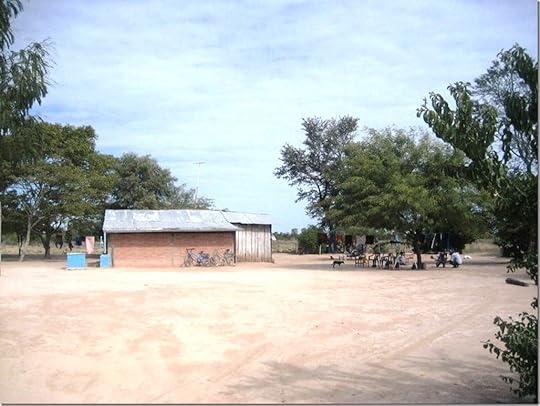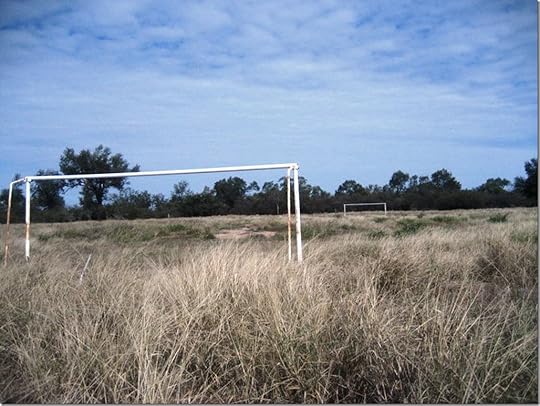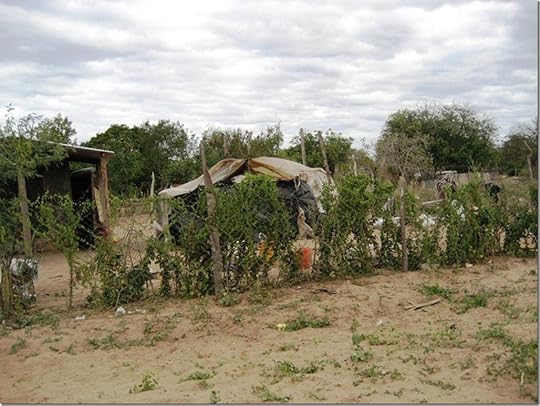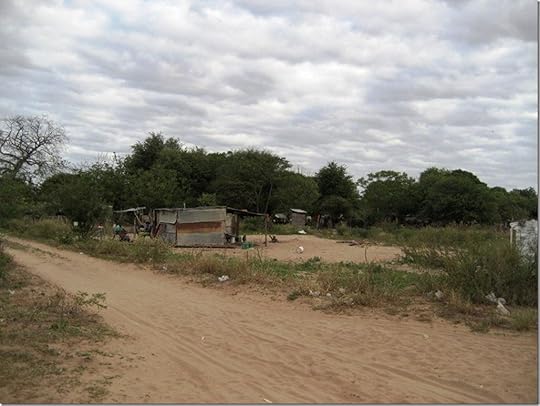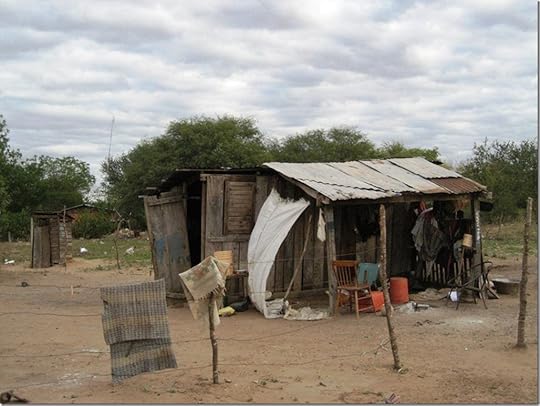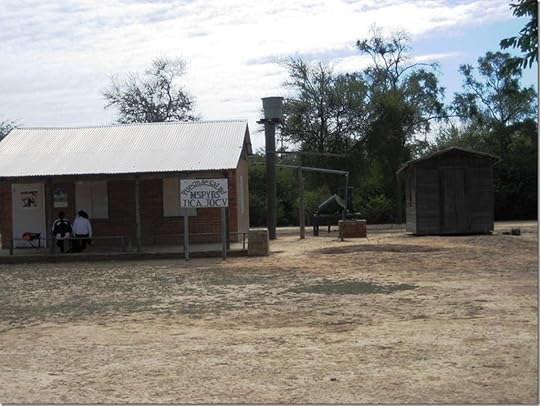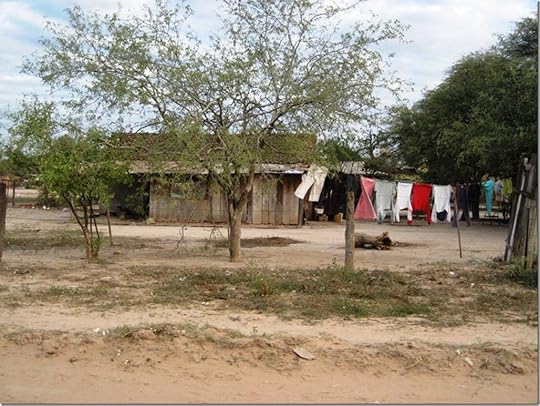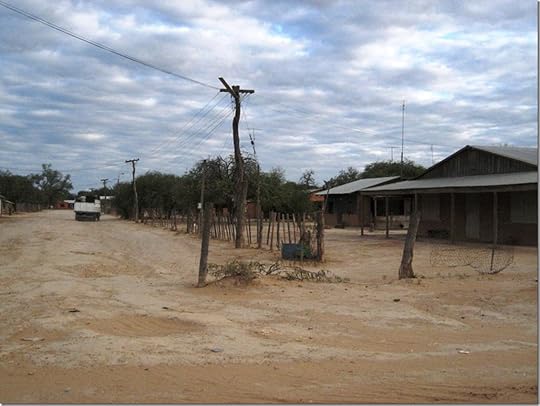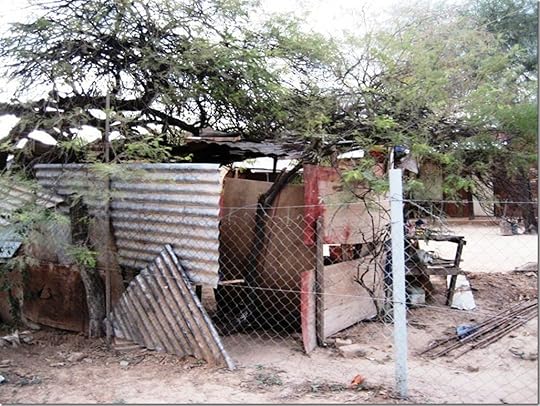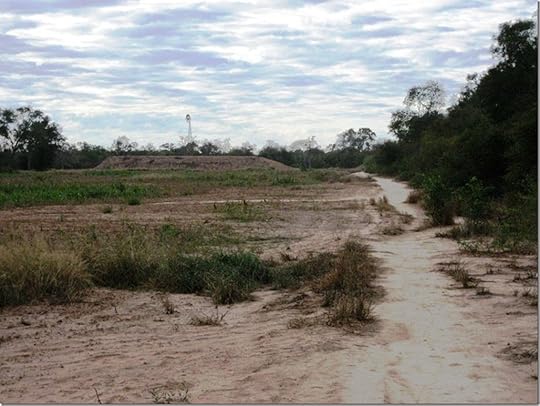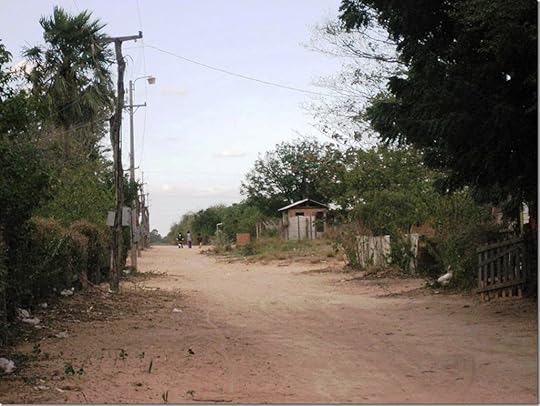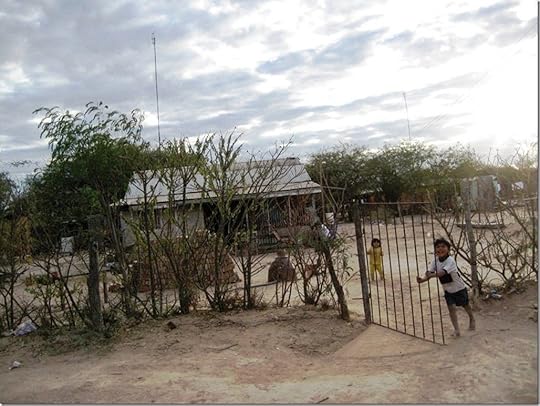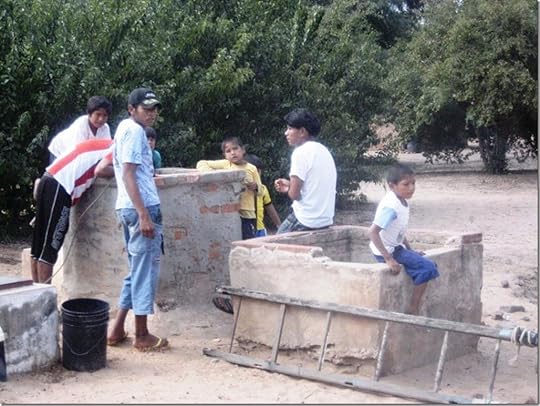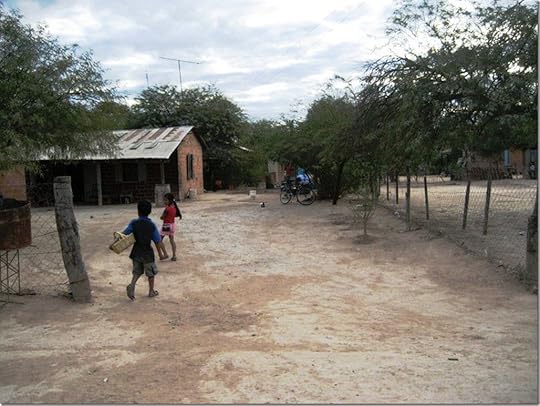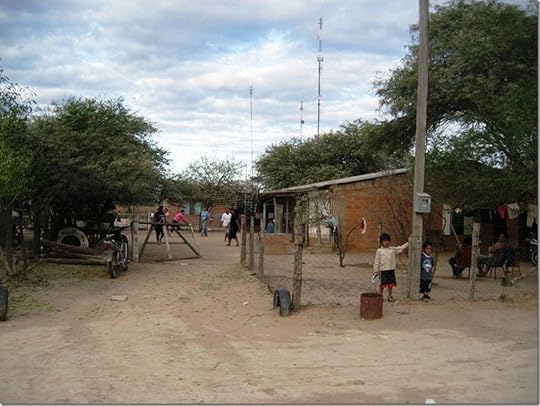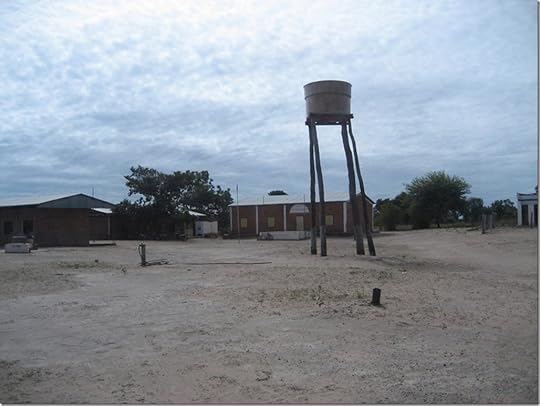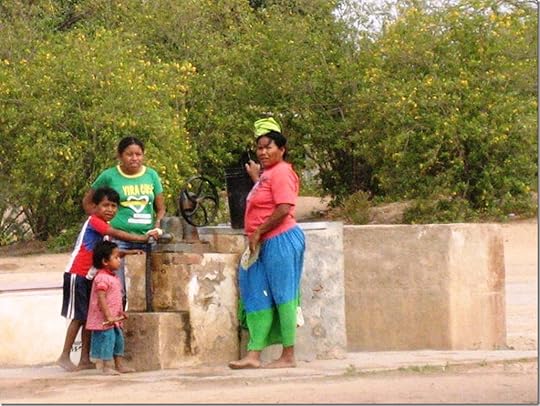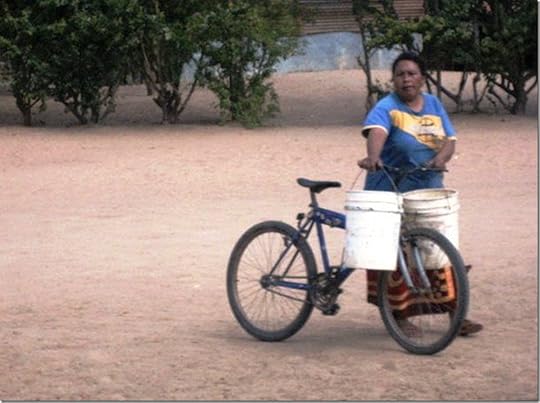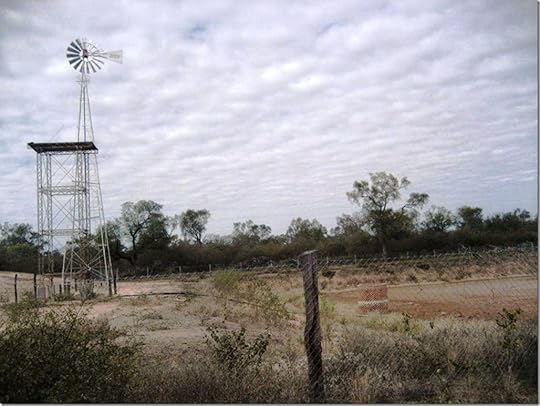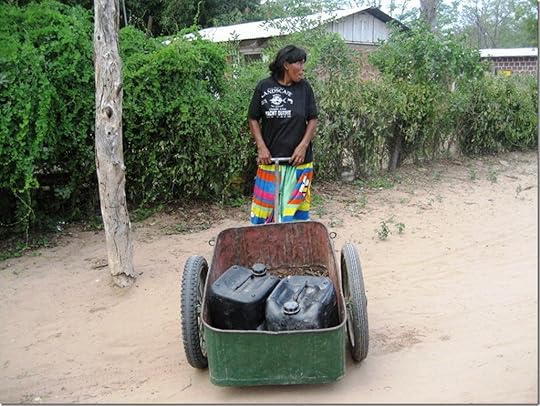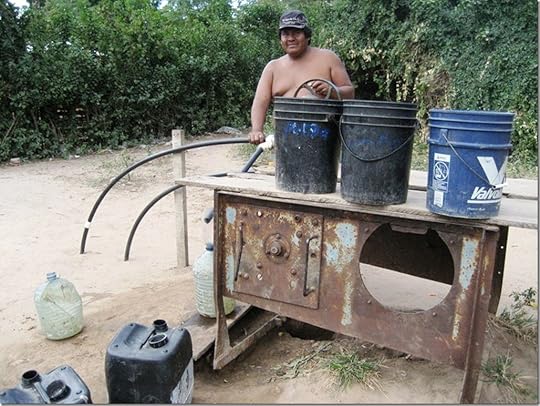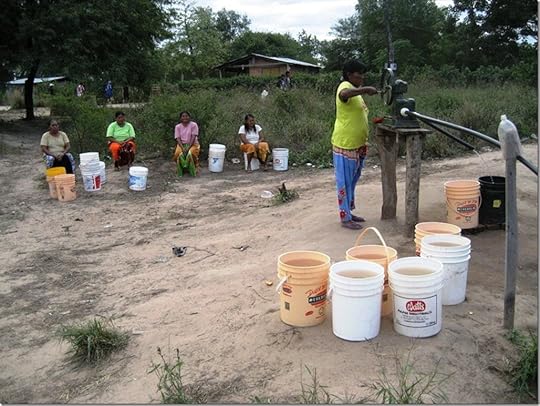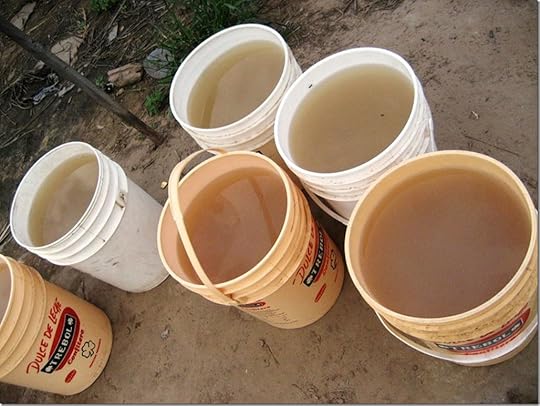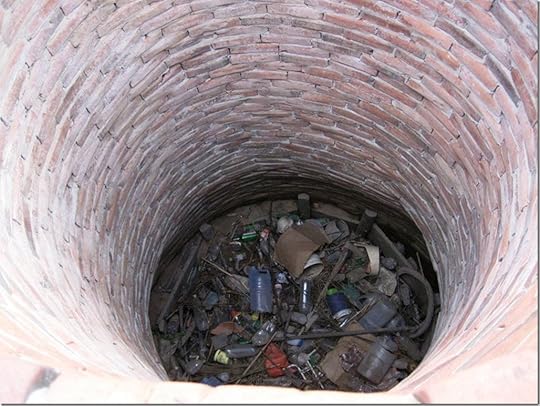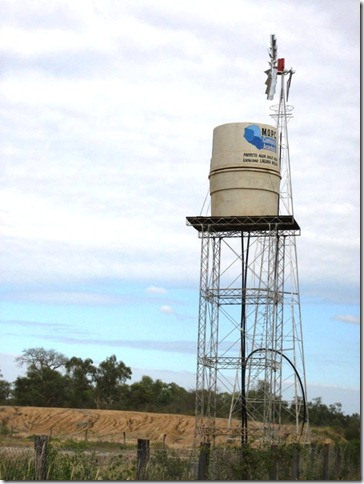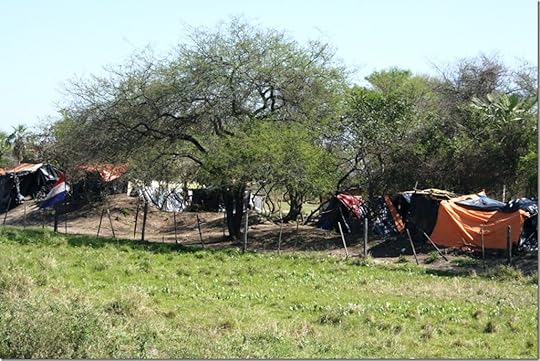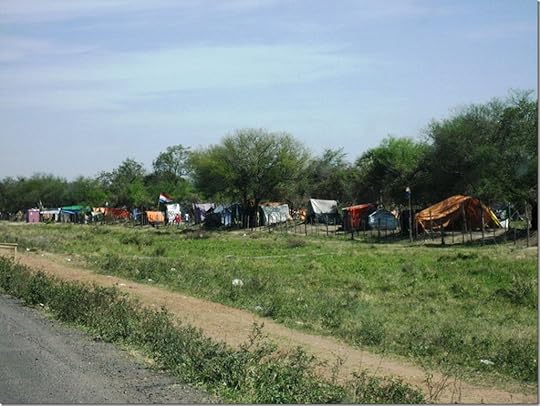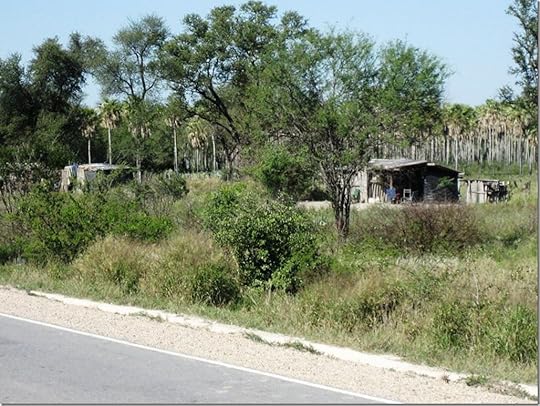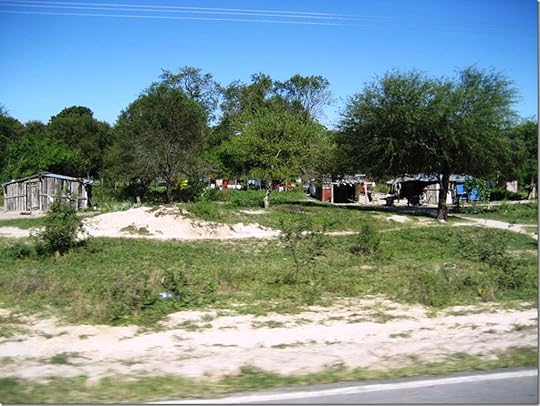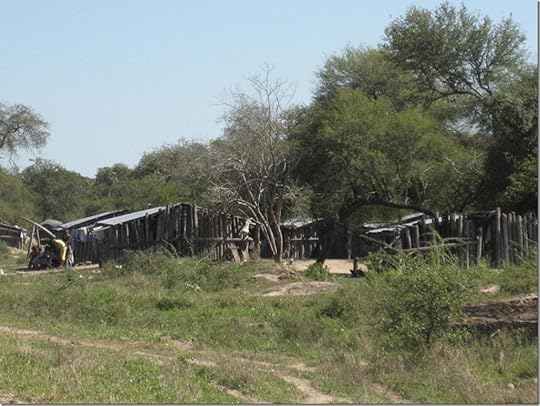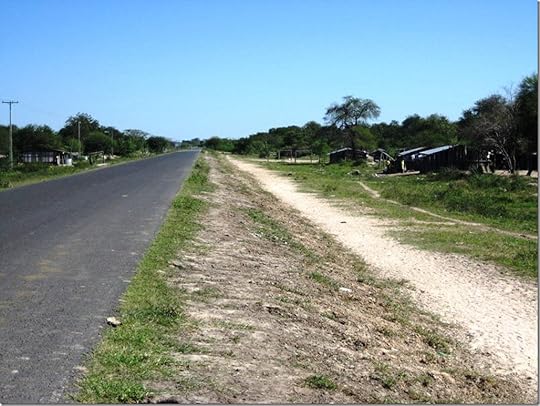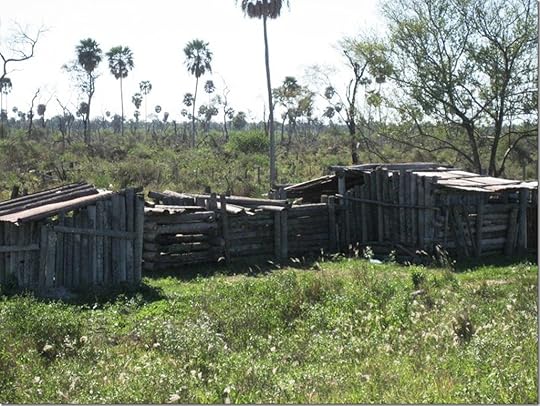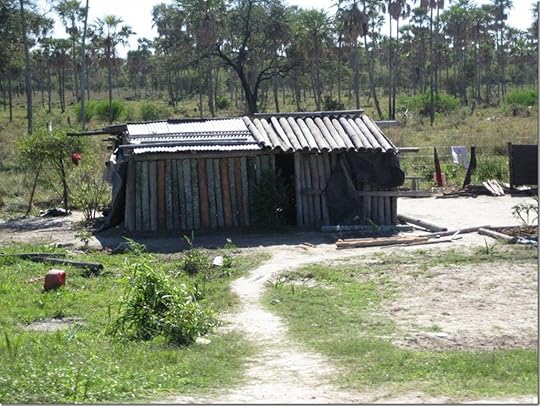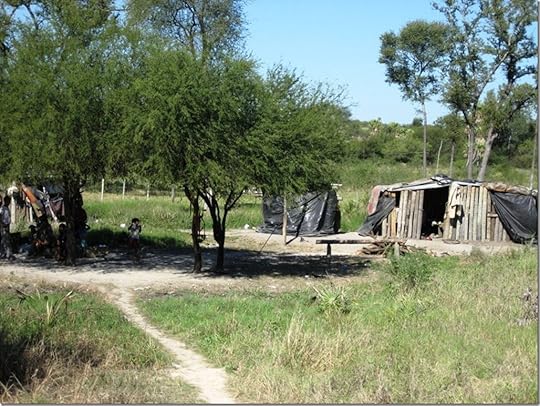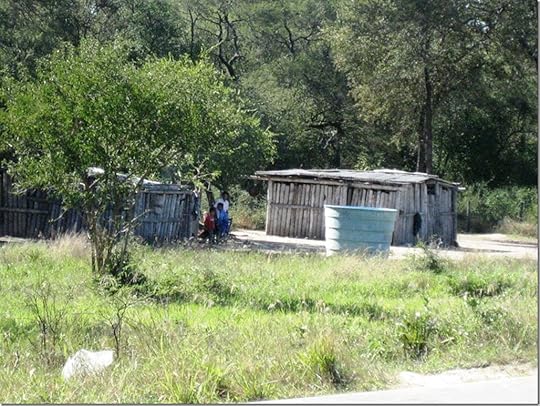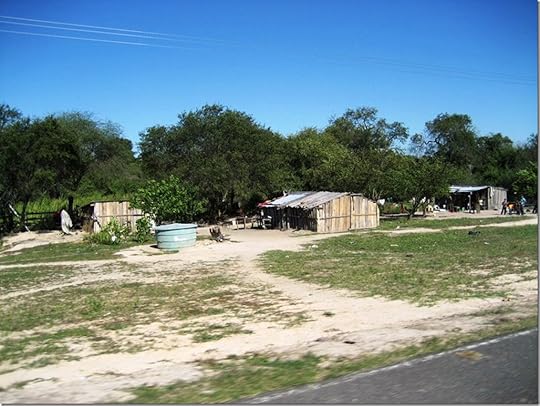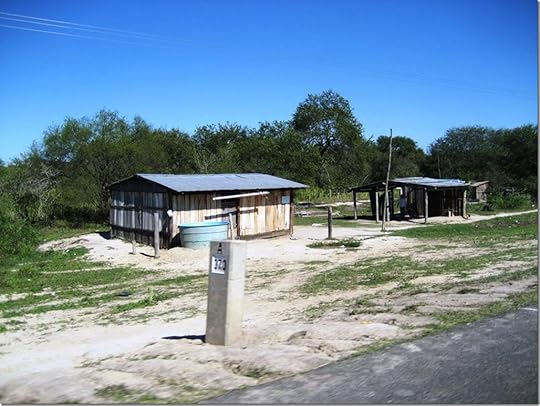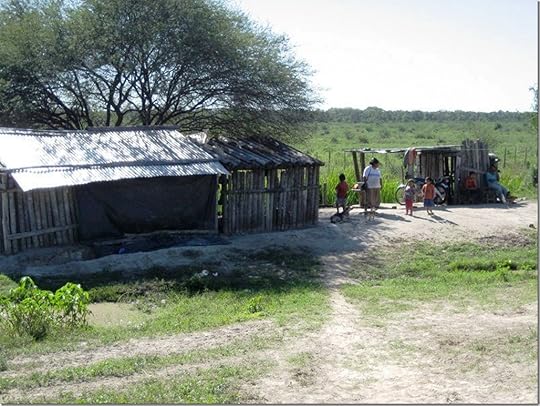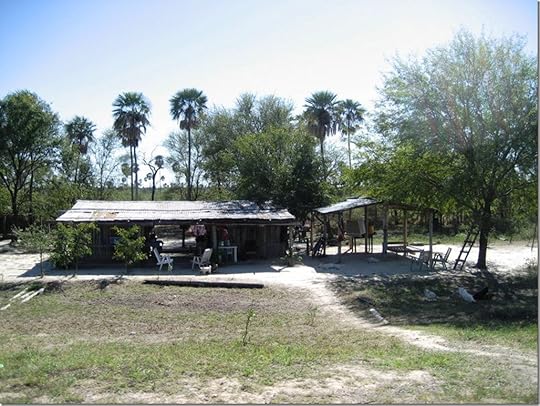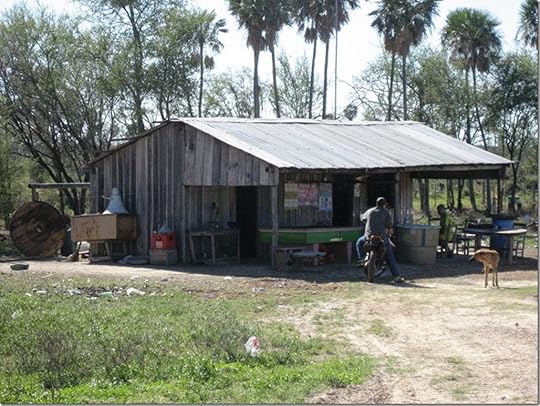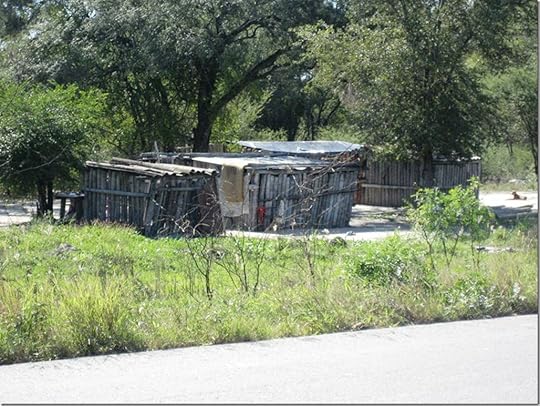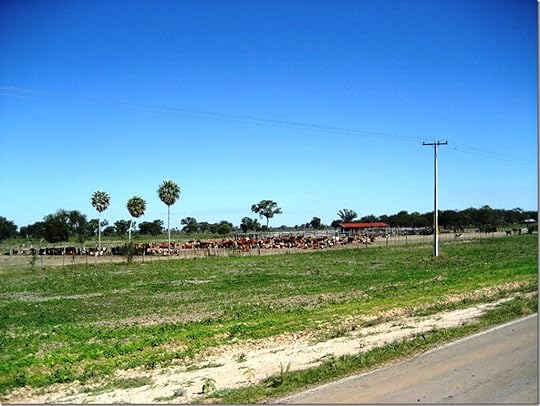M.G. Edwards's Blog, page 13
September 17, 2012
Kilimanjaro Book Wins Honorable Mention
My book, Kilimanjaro: One Man’s Quest to Go Over the Hill, has been awarded Honorable Mention by the 2012 Global Ebook Award in the Sports/Fitness/Recreation Non-Fiction category.
Kilimanjaro is a memoir that chronicles my attempt to summit Mount Kilimanjaro, the highest mountain in Africa. At forty years old and on the verge of a midlife crisis, I tried to change my life by climbing a mountain. This is my true story of facing Kilimanjaro and other challenges at middle age.
Readers have called Kilimanjaro “life changing,” “inspirational,” “an epic journey of self-discovery,” and “a peek into someone’s personal travel journal.” It’s a book for anyone who feels over the hill and needs encouragement to make a life change in the face of difficult odds. It’s also for the casual climber, mountaineer, or hiker who is interested climbing one of the world’s tallest mountains. Filled with insights and advice for those who are contemplating their own Kilimanjaro climb, my book will put you on the mountain and inspire you to go over it.
Ebook Booksellers
Kilimanjaro is available to purchase as an ebook for $3.99 at these booksellers:
 Amazon.com for Kindle (United States)
Amazon.com for Kindle (United States)
Amazon.co.uk for Kindle (United Kingdom)
Amazon.fr for Kindle (France)
Amazon.de for Kindle (Germany)
Amazon.it for Kindle (Italy)
Amazon.es for Kindle (Spain)
Barnes & Noble for Nook
Smashwords for iPad and other e-readers
Apple iTunes for iPad/iPhone
Diesel Ebooks for iPad and other e-readers
Goodreads for iPad and other e-readers
Kobo Books for Kobo e-reader
The Wordshop for iPad and other e-readers
Print Booksellers
Kilimanjaro is available to buy in print for $9.99 from these booksellers:
Global Ebook Awards
The Global Ebook Awards honor and bring attention to ebook publishing. In its second year, the Awards were given in 101 specific categories and open to all publishers. Each winner was chosen by category rather than based on size or region. In 2012, almost 1,000 submissions were judged by a panel of more than 250 experts in the categories and genres of the books nominated. For more information, visit http://globalebookawards.com.
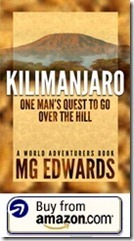 M.G. Edwards is a writer of books and stories in the mystery, thriller and science fiction-fantasy genres. He also writes travel adventures. He is author of Kilimanjaro: One Man’s Quest to Go Over the Hill, a non-fiction account of his attempt to summit Mount Kilimanjaro, Africa’s highest mountain and a collection of short stories called Real Dreams: Thirty Years of Short Stories. His books are available as an e-book and in print on Amazon.com and other booksellers. He lives in Bangkok, Thailand with his wife Jing and son Alex.
M.G. Edwards is a writer of books and stories in the mystery, thriller and science fiction-fantasy genres. He also writes travel adventures. He is author of Kilimanjaro: One Man’s Quest to Go Over the Hill, a non-fiction account of his attempt to summit Mount Kilimanjaro, Africa’s highest mountain and a collection of short stories called Real Dreams: Thirty Years of Short Stories. His books are available as an e-book and in print on Amazon.com and other booksellers. He lives in Bangkok, Thailand with his wife Jing and son Alex.
For more books or stories by M.G. Edwards, visit his web site at www.mgedwards.com or his blog, World Adventurers . Contact him at me@mgedwards.com , on Facebook , on Google+, or @m_g_edwards on Twitter.
© 2012 Brilliance Press. All rights reserved. No part of this work may be reproduced or transmitted without the written consent of the author.


September 14, 2012
Interview with Writer/Photographer M.G. Edwards
Special thanks to artist, editor and cover designer extraordinaire Elinor Mavor for interviewing me about my book Kilimanjaro: One Man’s Quest to Go Over the Hill.
Click here to read the article.
Elinor’s blog, Mavor Arts, cover the arts and pop culture as well as various artists, famous and almost famous, sometimes herself, plus talented family and friends. I’m honored that she included me as a writer/photographer. The photos posted were taken by me or my travel companions during our Kilimanjaro climb in December 2010-January 2011.
Kilimanjaro photo licensed from ShutterStock .
About Elinor Mavor
Elinor Mavor is a professional art director, editor, writer and illustrator. She is a longtime contributor of artwork for the advertising, publishing and gaming industries. Her popular blog, Mavor Arts, features articles about her own work plus other well-known and emerging artists. She has been an editor since 1978 and was Editor and Art Director for two famous magazines, Amazing Stories and Fantastic Stories. Since 1982, she has edited magazines, newsletters, brochures and more recently started editing novels and designing cover art for self-published authors. With more than a decade of experience in full service graphic design and illustration, Elinor knows what is involved in designing, illustrating, writing and producing a project from conception to printed piece. Her BEHANCE Network/My Portfolio includes samples of her cover artwork. She welcomes writers who need editing services, including copy editing, proofreading, and critiquing, and/or book cover designs for their books. Click here to contact her.
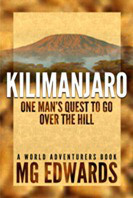 M.G. Edwards is a writer of books and stories in the mystery, thriller and science fiction-fantasy genres. He also writes travel adventures. He is author of Kilimanjaro: One Man’s Quest to Go Over the Hill, a non-fiction account of his attempt to summit Mount Kilimanjaro, Africa’s highest mountain and a collection of short stories called Real Dreams: Thirty Years of Short Stories. His books are available as an e-book and in print on Amazon.com and other booksellers. He lives in Bangkok, Thailand with his wife Jing and son Alex.
M.G. Edwards is a writer of books and stories in the mystery, thriller and science fiction-fantasy genres. He also writes travel adventures. He is author of Kilimanjaro: One Man’s Quest to Go Over the Hill, a non-fiction account of his attempt to summit Mount Kilimanjaro, Africa’s highest mountain and a collection of short stories called Real Dreams: Thirty Years of Short Stories. His books are available as an e-book and in print on Amazon.com and other booksellers. He lives in Bangkok, Thailand with his wife Jing and son Alex.
For more books or stories by M.G. Edwards, visit his web site at www.mgedwards.com or his blog, World Adventurers . Contact him at me@mgedwards.com , on Facebook , on Google+, or @m_g_edwards on Twitter.
© 2012 Brilliance Press. All rights reserved. No part of this work may be reproduced or transmitted without the written consent of the author.


September 11, 2012
Wat Mahathat in Ayutthaya, Thailand
This is the final installment of a five-part series about Ayutthaya, Thailand. This article features Wat Mahathat, the ruin of Buddhist temple dating back to the Ayutthaya Kingdom period (1350-1767). Previous posts discussed the historic City of Ayutthaya; the temple ruins of Wat Chaiwatthanaram; Buddhist monastery Wat Phu Khao Thong, and temple ruins of Wat Yai Chai Mongkhon.
Wat Mahathat, or the “Monastery of the Great Relic” according to the website History of Ayutthaya, is a former Buddhist temple located in the heart of historic Ayutthaya not far from the old royal palace. It is one of the most famous sites in the Ayutthaya Historical Park.
Wat Mahathat is best known for the photogenic Buddha’s head embedded in the trunk of a banyan tree. The well-preserved face with a serene look leaves a lasting impression. Experts believe that the sandstone head either fell from a statue and landed in the tree or was left there by a thief who could not haul it away.
Although most visitors come to see the famous head, the temple itself is just as interesting.
Wat Mahathat was one of the largest and most important temple complexes in the Ayutthaya Kingdom. Historical records indicate that it was either built by King Uthong (Ramathibodhi I, 1350-69), King Borommaracha I (1370-88), or King Ramesuan (1388-95). The site fell into disrepair in the 1630s and 1730s before the Burmese razed it in 1767. Many of the prang and stupa or chedi (spires) collapsed after years of decay. Efforts have been underway since 1956 to preserve the site.
The temple served as the religious center of the Ayutthaya Kingdom and was the seat of the supreme Buddhist patriarch of Siam (early Thailand). It once housed relics captured during military campaigns in Cambodia and elsewhere. During the annual Kathin (royal barge) ceremony, the Ayutthaya kings sailed in a procession of barges down a canal from the palace to the temple, where they would disembark, pray, and make offerings to the gods.
Like Wat Chaiwattanaram, the Khmer-style Wat Mahathat was built in the shape of five-pointed structure (quincunx) with a large central prang (tower) more than 50 meters (165 feet) high representing the legendary Buddhist mountain Meru (Phra Men). Four smaller prang on the corners formed a cross symbolizing four continents facing the sea (a large, grassy courtyard). An ordination hall lay nearby. Records indicate that the temple’s architectural style, artwork, and relics grew more ornate during subsequent renovations as befitted a place of religious significance.
Although efforts have been made to restore or add Buddha statues, most remain headless after being decapitated by the Burmese in 1767.
Some preserved prang, chedi, and a few murals amid a discombobulated maze of rubble are all that’s left of this once-magnificent place. While not as visually stunning as Wat Chaiwattanaram, Wat Mahathat has a larger footprint and an openness that lets you explore up close monuments of the former kingdom.
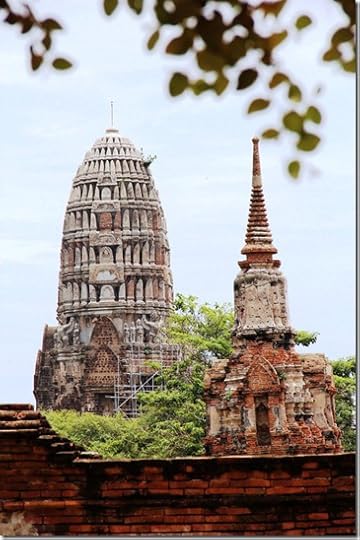
If you plan to visit Ayutthaya and the historical park, make a stop at Wat Mahathat. It’s one site you don’t want to miss!

Video clip of Wat Mahathat in Ayutthaya, Thailand
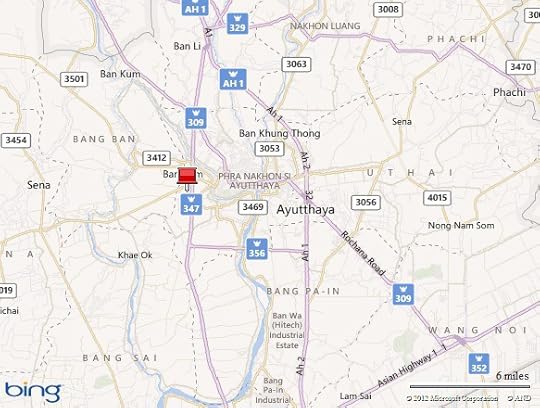
More About Ayutthaya
Click here to read about the City of Ayutthaya and the Ayutthaya Historical Park
Click here to read about Wat Chaiwatthanaram, the ruin of a former Buddhist temple
Click here to read about Wat Phu Khao Thong, a historical Buddhist monastery
Click here to read about Wat Mahathat, the ruin of a former Buddhist temple
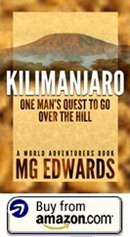 M.G. Edwards is a writer of books and stories in the mystery, thriller and science fiction-fantasy genres. He also writes travel adventures. He is author of Kilimanjaro: One Man’s Quest to Go Over the Hill, a non-fiction account of his attempt to summit Mount Kilimanjaro, Africa’s highest mountain and a collection of short stories called Real Dreams: Thirty Years of Short Stories. His books are available as an e-book and in print on Amazon.com and other booksellers. He lives in Bangkok, Thailand with his wife Jing and son Alex.
M.G. Edwards is a writer of books and stories in the mystery, thriller and science fiction-fantasy genres. He also writes travel adventures. He is author of Kilimanjaro: One Man’s Quest to Go Over the Hill, a non-fiction account of his attempt to summit Mount Kilimanjaro, Africa’s highest mountain and a collection of short stories called Real Dreams: Thirty Years of Short Stories. His books are available as an e-book and in print on Amazon.com and other booksellers. He lives in Bangkok, Thailand with his wife Jing and son Alex.
For more books or stories by M.G. Edwards, visit his web site at www.mgedwards.com or his blog, World Adventurers . Contact him at me@mgedwards.com , on Facebook , on Google+, or @m_g_edwards on Twitter.


September 7, 2012
Wat Yai Chai Mongkhon in Ayutthaya, Thailand
This is the fourth in a five-part series on Ayutthaya, Thailand about Wat Yai Chai Mongkhon, a restored Buddhist temple dating back to the Ayutthaya Kingdom period (1350-1767). The first article described the historic City of Ayutthaya; the second, the temple ruins of Wat Chaiwatthanaram, and the third, Wat Phu Khao Thong. The final post will feature the ruins of temple Wat Mahathat.
Wat Yai Chai Mongkhon, or the “Great Monastery of Auspicious Victory” according to the website History of Ayutthaya, is a restored Buddhist temple located in southeast Ayutthaya. Evidence of a large moat that once existed around the site suggests that it was once an important Khmer-style temple complex in “Ayodhya,” a settlement that pre-dated the Ayutthaya Kingdom. Today it’s a functioning temple with a monastery and restored stupa or chedi (monument). Several smaller chedi ruins dotting the grounds serve as a reminder that the site is historical.
Records indicate that Ayutthaya King Uthong, or Ramathibodhi I (1350-69), established the monastery to lay to rest two of his children, Chao Kaeo and Chao Thai, who died of cholera. Its first name was Wat Pa Kaeo or the “Monastery of the Crystal Forest.” The temple built on the site later became known as Wat Chao Phya Thai, or the “Monastery of the Supreme Patriarch,” and was home to monks trained in then-Ceylon (present-day Sri Lanka).
The temple is noteworthy in Ayutthaya’s history for its role as a meeting place for conspirators involved in palace intrigue. Stories suggest that it was once home to a closely-guarded, priceless ruby that represented the wealth of the gods. In his chronicle of the history of Ayutthaya, Jeremias Van Vliet, an employee of the Dutch East India Company, alleged that slaves were groomed to die in mock attempts to steal the ruby as an offering to the gods.
The current configuration of the temple and chedi took shape during the reign of King Naresuan (1590-1605), who reportedly gave it the name “Wat Yai Chai Mongkhon” to commemorate his victory over the Burmese occupiers he ousted from Ayutthaya in 1592. The temple was destroyed by the Burmese in 1767 and restored by the Thais in 1957. The tall chedi that stands an estimated 30 meters (100 feet) is almost as high as the one at Wat Phu Khao Thong; its more slender profile that rises in the middle of urban Ayutthaya obscures its true height.
The temple is perhaps best known for its seven-meter (23 feet) long reclining Buddha constructed during King Naresuan’s reign. One of the largest outdoor reclining Buddhas in Thailand, it was restored in 1965 and is now a major tourist attraction in Ayutthaya.
The large chedi that dominates the temple complex has a square base with smaller chedi on each corner. It rises to a platform with great views of the city. As you ascend the steps, a large Buddha statue greets you at the top with a calm nod. Above the platform rises a bell-shaped tower with an octagonal base that tapers to a point; a chamber on the western side with Buddhist relics serves as a prayer shrine. The temple complex unfolds below in all directions, from the monks’ quarters and ordination hall to the west to a garden with several large Buddhist statues to the east. Manicured lawns with groomed trees and ruined chedi grace the north and south flanks.
During my visit to the temple in August 2012, I was struck by the number and symmetry of the Buddha statues that meditated around the chedi base. Some such as those in the nearby prayer shrine were unique, but most were virtually identical and sat at attention in a tantric state. My wife did an excellent job capturing this impression with photos of them at artistic angles.
Wat Yai Chai Mongkhon was the last stop on our daytrip to Ayutthaya. We enjoyed watching the encroaching dusk transform the temple from a place that beckoned visitors to one reclaimed by shadows. The site is a great destination to end the day before going for dinner and embarking on an evening tour of the city to see the historic monuments of Ayutthaya at night.

More About Ayutthaya
Click here to read about the City of Ayutthaya and the Ayutthaya Historical Park
Click here to read about Wat Chaiwatthanaram, the ruin of a former Buddhist monastery in Ayutthaya
Click here to read about Wat Phu Khao Thong, a historical Buddhist monastery in Ayutthaya
 M.G. Edwards is a writer of books and stories in the mystery, thriller and science fiction-fantasy genres. He also writes travel adventures. He is author of Kilimanjaro: One Man’s Quest to Go Over the Hill, a non-fiction account of his attempt to summit Mount Kilimanjaro, Africa’s highest mountain and a collection of short stories called Real Dreams: Thirty Years of Short Stories. His books are available as an e-book and in print on Amazon.com and other booksellers. He lives in Bangkok, Thailand with his wife Jing and son Alex.
M.G. Edwards is a writer of books and stories in the mystery, thriller and science fiction-fantasy genres. He also writes travel adventures. He is author of Kilimanjaro: One Man’s Quest to Go Over the Hill, a non-fiction account of his attempt to summit Mount Kilimanjaro, Africa’s highest mountain and a collection of short stories called Real Dreams: Thirty Years of Short Stories. His books are available as an e-book and in print on Amazon.com and other booksellers. He lives in Bangkok, Thailand with his wife Jing and son Alex.
For more books or stories by M.G. Edwards, visit his web site at www.mgedwards.com or his blog, World Adventurers . Contact him at me@mgedwards.com , on Facebook , on Google+, or @m_g_edwards on Twitter.


September 3, 2012
Thoughts & Sayings (September 2012)
Here are some thoughts and sayings I posted on Twitter and/or Facebook in August. To my knowledge, I made these up (for better or for worse). Sit back, relax, and enjoy the write!
Encouraging Words
1. 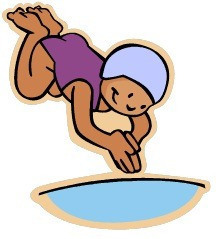 In the past, now is the future.
In the past, now is the future.
2. I’m not perfect, but I’m perfect for you.
3. It’s better to go off the deep end than the shallow end.
4. Can you hope that there’s hope when there’s no hope?
5. Reach for the sky, because if you shoot for the moon you might see stars.
6. I found myself at the Lost & Found.
Twisted Words
7. How many stories are you?
8. There’s no particular reason for this signal. It’s merely taking up space.
9. A dull scientist can be brilliant.
Holidays & Events
 10. August has a dearth of official holidays. Go ahead, pick one from another country and celebrate it.
10. August has a dearth of official holidays. Go ahead, pick one from another country and celebrate it.
11. It’s ironic that the movie “Total Recall” forgot to include scenes from the planet Mars.
12. Happy Day 11 of the Olympics, Day 3 of the Curiosity Mars Landing, and 90 Days until the U.S. Election. It’s all a matter of perspective.
Random Musings
 13. The squeaky wheel can go find another repair shop.
13. The squeaky wheel can go find another repair shop.
14. Instead of multilevel marketing, can’t I just stay on the same level?
15. Please don’t forget who I am. Someday I may need to ask you to remind me.
16. Someone told me that I’m such a tweet. I’m not quite sure how to take that.
17. A picture is worth 1,000 words, but it only takes one word to describe a picture.
Images courtesy of Microsoft.
Click here to read the previous batch of Thoughts & Sayings.


August 22, 2012
Wat Phu Khao Thong in Ayutthaya, Thailand
This is the third in a five-part series on Ayutthaya, Thailand about Wat Phu Khao Thong, a restored Buddhist temple dating back to the Ayutthaya Kingdom period (1350-1767). The first article described the historic City of Ayutthaya ; the second, the temple ruins of Wat Chaiwatthanaram. Upcoming posts will feature the ruins Wat Mahathat and the Wat Yai Chai Mongkon temple.
Wat Phu Khao Thong, or the “Temple of the Golden Mount” in Ayutthaya, is a large Buddhist complex located about two kilometers (one mile) northwest of the city center. The restored temple was built in 1387 during the reign of King Ramesuan (1339-95) of the Ayutthaya Kingdom. In 1991, UNESCO designated it a World Heritage Site within Ayutthaya Historical Park. Its famous chedi or stupa (pagoda) that rises more than 30 meters (100 feet) above the Chao Phraya River offers one of the best views in Ayutthaya.
Following his capture of Ayutthaya in 1569 at the end of the first Burmese-Siamese War, Burmese King Bhureng Noung began to construct a large Burmese Mon-style chedi on the site to commemorate his victory. The structure was not completed until 1587, when then-Prince Naresuan of the Ayutthaya Kingdom (1590-1605) finished it as Thai-style chedi to honor Ayutthaya’s independence from Burma in 1584.
The chedi was renovated in 1744 to its current form, a large square Burmese Mon-style base that rises at a moderate angle to a smaller base supporting a Thai-style chedi with a steep point. The entire hybrid structure is considered a single chedi. Four sets of stairs, one on each side, ascend to the second base.
A nondescript passageway on the upper base leads to a sacred Buddhist shrine in the heart of the structure.
The chedi dominates Ayutthaya’s landscape and offers great views of the countryside west of the city.
A contemporary Buddhist temple built on the ruins of its predecessor lies to the south.
The remains of a canal that once linked the temple to the Chao Phraya River borders it to the east. Now accessible by road, the canal fell into disuse following the destruction of Ayutthaya in 1767.
To the north is a monument dedicated to King Naresuan with a statue of the legendary king mounted on horseback. Large, colorful statues of chickens surround the monument, reportedly paying homage to the king’s fondness for the bird.
While not as famous as other historical sites in Ayutthaya, Wat Phu Khao Thong is worth a visit to climb the great chedi and enjoy the view. It’s one of the few places where you can bestride a remnant of ancient Ayutthaya.
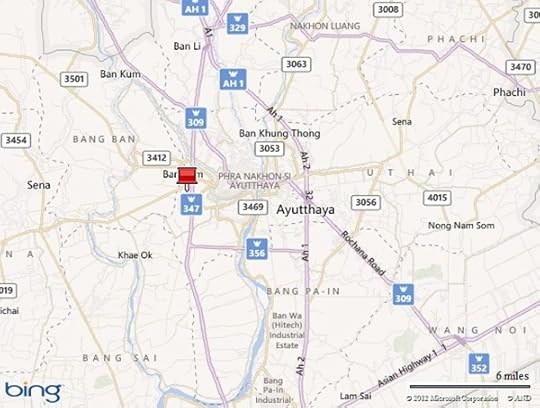
More About Ayutthaya
Click here to read about the City of Ayutthaya and the Ayutthaya Historical Park
Click here to read about Wat Chaiwatthanaram, the ruin of a former Buddhist monastery in Ayutthaya
![buythumb[4]](https://i.gr-assets.com/images/S/compressed.photo.goodreads.com/hostedimages/1381138752i/4342270.jpg) M.G. Edwards is a writer of books and stories in the mystery, thriller and science fiction-fantasy genres. He also writes travel adventures. He is author of Kilimanjaro: One Man’s Quest to Go Over the Hill, a non-fiction account of his attempt to summit Mount Kilimanjaro, Africa’s highest mountain and a collection of short stories called Real Dreams: Thirty Years of Short Stories. His books are available as an e-book and in print on Amazon.com and other booksellers. He lives in Bangkok, Thailand with his wife Jing and son Alex.
M.G. Edwards is a writer of books and stories in the mystery, thriller and science fiction-fantasy genres. He also writes travel adventures. He is author of Kilimanjaro: One Man’s Quest to Go Over the Hill, a non-fiction account of his attempt to summit Mount Kilimanjaro, Africa’s highest mountain and a collection of short stories called Real Dreams: Thirty Years of Short Stories. His books are available as an e-book and in print on Amazon.com and other booksellers. He lives in Bangkok, Thailand with his wife Jing and son Alex.
For more books or stories by M.G. Edwards, visit his web site at www.mgedwards.com or his blog, World Adventurers . Contact him at me@mgedwards.com , on Facebook , on Google+, or @m_g_edwards on Twitter.


August 19, 2012
Wat Chaiwatthanaram in Ayutthaya, Thailand
This is the second in a five-part series on Ayutthaya, Thailand about the temple ruins at Wat Chaiwatthanaram. The first article described the City of Ayutthaya. The remainder will feature other sites in Ayutthaya Historical Park, including Wat Phu Khao Thong, Wat Mahathat, and Wat Yai Chai Mongkon.
Wat Chaiwatthanaram is a restored Buddhist temple on the west bank of the Chao Phraya River across from Ayutthaya Island. In 1991, UNESCO designated the complex a World Heritage Site in Ayutthaya Historical Park. The temple ruin, one of Ayutthaya’s most popular tourist destinations, offers picturesque views that capture the essence of this fascinating place. The site is remarkable for its once-innovative square chedi or stupa (pagodas) with indented corners that are now common structures in contemporary Thai Buddhist temples.
According to the information resource History of Ayutthaya, the name Wat Chaiwatthanaram is roughly translated as the “Monastery of the Victorious and Prosperous Temple.” It was built over two decades from 1630 to 1650 by King Prasat Thong of the Ayutthaya Kingdom. Dedicated to the memory of his beloved foster mother, the temple was used to perform royal ceremonies, including the cremation of deceased royals.
The temple’s centerpiece is the “Phra Prang Prathan,” a 35-meter tall prang (tower) built in Khmer (Cambodian) style popular at the time of construction.
The rectangular outer wall and gates that once surrounding the symmetrical complex were gone when I visited in August 2012, and only the foundations and a few of the eight chedi that served as chapels remained.
The wall, which symbolized the crystal walls of the world in Buddhist lore, once enclosed a large courtyard. In its center stood a still-intact, five-pointed structure (quincunx) that included Phra Prang Prathan, a symbol of the legendary Buddhist mountain Meru (Phra Men), and four smaller prang representing four continents pointing in different directions toward the sea. The courtyard represented seven oceans.
On the angled base of Phra Prang Prathan graced by large Buddhist statues, sets of stairs climbed to what was once an ordination hall where ceremonies were performed and to a gallery that symbolized seven mountains.
Two restored Thai-style chedi next to the Chao Phraya River interred the ashes of King Prasat Thong’s mother.
Destroyed by the Burmese in 1767, Wat Chaiwatthanaram lay deserted and was looted for bricks, Buddhist statues, and other artifacts for more than two centuries until it was restored by the Royal Thai government in 1992. The site sustained damage during the flooding of Ayutthaya in late 2011, and was still closed for restoration when I visited. I managed to take some fantastic photos of the complex from the site perimeter.
While some of the temple’s splendor remains, many of its structures, statues, artwork, and the royal boat landing at the river’s edge disappeared ages ago. Enough of it has been preserved to give visitors of glimpse of its former glory.
A video clip with a 360-degree view of the Wat Chaiwatthanaram site.

Video clip of Wat Chaiwatthanaram in Ayutthaya, Thailand
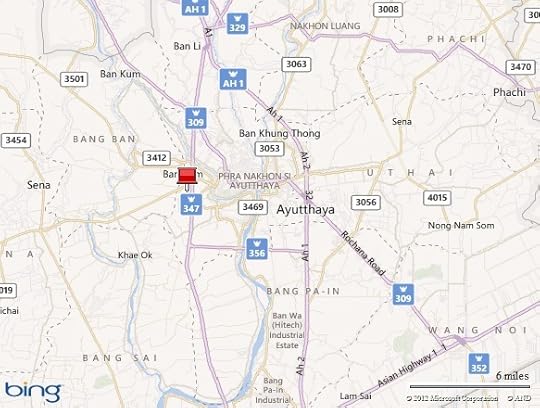
More About Ayutthaya
Click here to read about the City of Ayutthaya and the Ayutthaya Historical Park
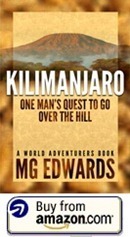 M.G. Edwards is a writer of books and stories in the mystery, thriller and science fiction-fantasy genres. He also writes travel adventures. He is author of Kilimanjaro: One Man’s Quest to Go Over the Hill, a non-fiction account of his attempt to summit Mount Kilimanjaro, Africa’s highest mountain and a collection of short stories called Real Dreams: Thirty Years of Short Stories. His books are available as an e-book and in print on Amazon.com and other booksellers. He lives in Bangkok, Thailand with his wife Jing and son Alex.
M.G. Edwards is a writer of books and stories in the mystery, thriller and science fiction-fantasy genres. He also writes travel adventures. He is author of Kilimanjaro: One Man’s Quest to Go Over the Hill, a non-fiction account of his attempt to summit Mount Kilimanjaro, Africa’s highest mountain and a collection of short stories called Real Dreams: Thirty Years of Short Stories. His books are available as an e-book and in print on Amazon.com and other booksellers. He lives in Bangkok, Thailand with his wife Jing and son Alex.
For more books or stories by M.G. Edwards, visit his web site at www.mgedwards.com or his blog, World Adventurers . Contact him at me@mgedwards.com , on Facebook , on Google+, or @m_g_edwards on Twitter.


August 16, 2012
Ayutthaya, Thailand
This is the first in a five-part series about Ayutthaya, Thailand and the Ayutthaya Historical Park, a UNESCO World Heritage Site. This article gives an overview of the City of Ayutthaya and its history. The others will feature four of its most important sites: Wat Chaiwatthanaram; Wat Phu Khao Thong; Wat Mahathat; and Wat Yai Chai Mongkon. They should give you a taste of what this amazing place has to offer.
In August 2012, I visited Ayutthaya, the site of the former capital of Thailand (also called Siam or Krung Tai) during the Ayutthaya Kingdom period. Established in 1350, the capital at its height in 1605 ruled an area that included Thailand, Cambodia, Laos, and parts of Burma (Myanmar) and China. The city was destroyed in April 1767 after a 14-month siege by Burmese invaders. Most of its buildings were reduced to rubble and its treasures looted or destroyed. The threat of a Chinese invasion at home forced the Burmese army to retreat a few months later, leaving Thailand decimated until the country reunified in December 1767 and a new capital was established in Bangkok (then-Thonburi).
In 1991, UNESCO named Ayutthaya a World Heritage Site and designated 15 sites in the city of significant historical value. These included Wat Ratchaburana; Wat Mahathat; Wat Phra Sri Sanphet; Wat Phra Ram; Wat Lokayasutha; Wiharn Phra Mongkhon Bopit; Wat Lokayasutha; Wat Yai Chai Mongkon; Phra Chedi Suriyothai; Wat Phanan Choeng; Wat Chaiwatthanaram; Ayutthaya Historical Study Centre; Japanese Settlement; Wat Phu Khao Thong; and the Elephant Camp (Kraal). Most are located on or around an island in the city center surrounded by the Chao Phraya River.
Some sites have partially restored temple ruins, such as the gorgeous Wat Chaiwatthanaram.
Wat Mahathat, a former Buddhist monastery and one of the largest sites in Ayutthaya Historical Park, is well known for the stone Buddha’s head stuck in a banyan tree on the grounds. Experts believe that the artifact was either abandoned by thieves or fell from a statue after the temple was destroyed.
Other ancient structures such as Wat Yai Chai Mongkon, a restored temple famous for its reclining Buddha, are still in use. Ruined prang (towers) and stupa or chedi (monuments) offer glimpses of Ayutthaya’s once-glorious past.
Wat Phu Khao Thong is another monastery dating back to the Ayutthaya Kingdom period that has been renovated and is still in use today.
Ayutthaya is a two-hour drive north of Bangkok (in good traffic) via an expressway from downtown Bangkok. It’s a great daytrip for those who want to explore Thailand’s past and the Ayutthaya Kingdom’s influence on Thai culture. The city of about 60,000 inhabitants is relatively compact and easy to navigate.
With many historical structures scattered throughout the city, Ayutthaya is a wonderful place to savor Thailand while you’re driving from site to site. Check out the beautiful countryside and the shallow (and somewhat muddy) Chao Phraya River that winds its way through the city on its way to the Gulf of Thailand.
Stop in the city center for lunch. The Amporn Shopping Centre and Chao Phrom Market have a variety of dining choices ranging from Thai to western cuisine.
Browse the local markets and try some fruits or snacks. The aging Chao Phrom Market is an authentic Thai market, gritty but fascinating. The contemporary Ayodhya Floating Market on the outskirts of town is a touristy place with elephant rides and staged re-enactments of the Burmese invasion. While it may feel kitschy and commercialized, it’s a fun place to end the day with a meal and some souvenir shopping. It’s different than the Ayutthaya Klong Sa Bua Floating Market, a better-known floating market that was closed when I visited but will reopen in October 2012.
Ayutthaya’s historical sites would have been in much better condition had they not been destroyed in 1767 — consider how well preserved its peer, the Independence National Historic Park in Philadelphia, Pennsylvania is — but many still stand as a testament to the former majesty of this ancient capital.
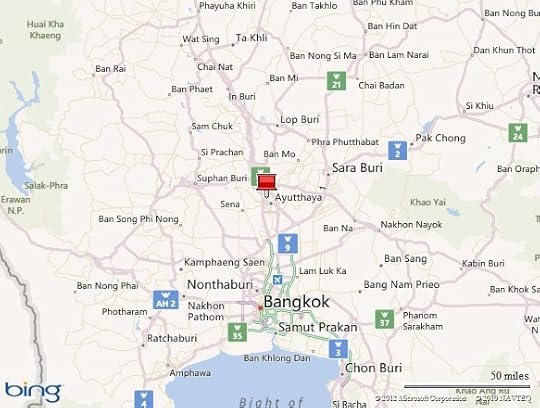
Visit Ayutthaya Historical Research for more in-depth information about historic Ayutthaya.
The photo of the historical painting of Ayutthaya was used with permission from Wikipedia.
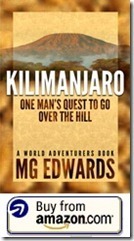 M.G. Edwards is a writer of books and stories in the mystery, thriller and science fiction-fantasy genres. He also writes travel adventures. He is author of Kilimanjaro: One Man’s Quest to Go Over the Hill, a non-fiction account of his attempt to summit Mount Kilimanjaro, Africa’s highest mountain and a collection of short stories called Real Dreams: Thirty Years of Short Stories. His books are available as an e-book and in print on Amazon.com and other booksellers. He lives in Bangkok, Thailand with his wife Jing and son Alex.
M.G. Edwards is a writer of books and stories in the mystery, thriller and science fiction-fantasy genres. He also writes travel adventures. He is author of Kilimanjaro: One Man’s Quest to Go Over the Hill, a non-fiction account of his attempt to summit Mount Kilimanjaro, Africa’s highest mountain and a collection of short stories called Real Dreams: Thirty Years of Short Stories. His books are available as an e-book and in print on Amazon.com and other booksellers. He lives in Bangkok, Thailand with his wife Jing and son Alex.
For more books or stories by M.G. Edwards, visit his web site at www.mgedwards.com or his blog, World Adventurers . Contact him at me@mgedwards.com , on Facebook , on Google+, or @m_g_edwards on Twitter.


August 12, 2012
How World Adventurers Got Its Groove Back
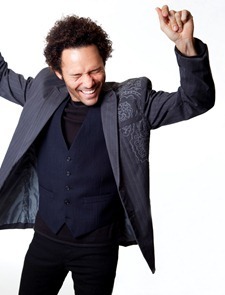 World Adventurers’ blog just passed 50,000 hits! Thank you, dear readers, search engines, and cross-posters, for your support. I’m happy to see readership pick up again after years of neglect and a transition from Windows Spaces Live, Microsoft’s now-defunct blogging site, to WordPress.
World Adventurers’ blog just passed 50,000 hits! Thank you, dear readers, search engines, and cross-posters, for your support. I’m happy to see readership pick up again after years of neglect and a transition from Windows Spaces Live, Microsoft’s now-defunct blogging site, to WordPress.
Once upon a time, this blog was very popular with more than 350,000 hits and was featured regularly by Microsoft on MSN at a time when blogging was far less ubiquitous. Then, readership declined when I took a break in 2008-09 and Spaces Live faded to extinction. I started blogging again after moving to WordPress in late 2010, and World Adventurers made a roaring comeback this year.
I first started blogging in December 2004 as a way to update family and friends about life overseas. This site has evolved since then in ways I could not have envisioned. Among the 875 posts published on a range of topics from travel, politics, sports, finance, and culture, my travelogues have been by far the most popular.
Most hits on WordPress have come in the past six months with readership rising at a steady clip. In April, this blog had almost 11,000 hits after WordPress featured my article about Zambia on Freshly Pressed. Many thanks for the nod!
If you’re a blogger and are looking to increase your readership, consider these suggestions that helped World Adventurers get its groove back.
1. Post regularly. Make an effort to post new content at least once or twice each week. It doesn’t have to be much, but make it worthwhile to your readers. I try to blog about something I think is interesting or timely two-to-three times per week. It may be counter-productive to post too frequently. Readers may not be able to keep up with you.
2. Find a niche. I used to blog about a variety of topics but found that readers were more interested in my posts on travel and culture, so I specialized. I still publish the occasional post on another topic, such as my monthly “Thoughts & Sayings” posts, but try to limit them to a handful each month. You’re more apt to build a following if you focus. Blog about what interests you and your areas of expertise. Chances are, you’ll find some avid readers who will appreciate your insights.
3. Time your posts. Note where your readership spikes and publish posts when they occur. I found that my readership is highest during the week and drops off on Friday and Saturday. Monday is my preferred day to post.
4. Announce your posts. If you’re on Facebook, Twitter, and/or other social media sites, share the link with your fans or followers. Give them a reason to visit your blog by personalizing the announcement. A “hook” or clever phrase works well, but don’t promise more than you can deliver.
5. Add photos and clip art. My travelogues are popular because I add photos. The adage that a picture says 1,000 words is generally true. Unless you’re posting prose or poetry, consider enhancing your blog post with quality images. Clip art used with permission can spruce up your writing. If you add links or pins to popular social media sites like Pinterest, it’s imperative that you have an image to appeal visually to potential readers.
6. Use tags. Adding tags (metadata) searchable by Google and other search engine helps increase blog readership by targeting readers searching for topics related to your blog. The more specific the tag, the better. For example, my “Top Ten to Do in Korea” post ranks high in search results because I used variations of the terms “Korea top ten” and “Korea things to do” rather than simply “Korea.” This helps distinguish it from other online information about Korea.
7. Be responsive. When someone shows interest in your blog post by commenting on it, respond to them. Thank them for visiting your blog. They’re more likely to visit again. Even better, show interest in their blog by following it, and chances are they may follow back. The stronger the relationship you have with your readers, the more likely they are to get to know you and refer your blog to others.
8. Cross-post blog links. Interact with other bloggers and exchange links. Posting your blog’s link to other sites with permission drives traffic between blogs. Other readers will be more likely to discover yours if they find a link to it. It’s a two-way street. You should reciprocate by inviting other bloggers to post links to their blogs on yours.
The following posts on World Adventurers have been the most popular in the past two years. A mixture of older and newer posts, they reflect an ongoing interest in travelogues, current events, information about the Foreign Service, and “hot” topics.
1. Top Ten Things to See in Zambia (with Photos)
2. I Am No Longer A Foreign Service Officer
3. Top Ten Things to Do in Korea
4. Hooker Hill
5. Top Ten Things to Do in Korea (with Photos)
6. Bangkok Flooding Update with Photos
7. What is a Foreign Service officer?
8. Bangkok Flooding: Aerial Views of the Flood (part one)
9. The Kilimanjaro Sign–Old and New
10. Bangkok Flooding: Aerial Views of the Flood (part three)
12. Bangkok Flooding: Views from Rama IV Bridge
13. Do Not Enter
14. I Survived Eating Pufferfish
15. M.G. Edwards
Thanks again to everyone who stopped by to visit World Adventurers! Without readers like you, I wouldn’t have a reason to blog.
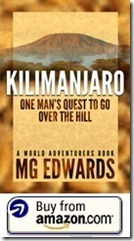 M.G. Edwards is a writer of books and stories in the mystery, thriller and science fiction-fantasy genres. He also writes travel adventures. He is author of Kilimanjaro: One Man’s Quest to Go Over the Hill, a non-fiction account of his attempt to summit Mount Kilimanjaro, Africa’s highest mountain and a collection of short stories called Real Dreams: Thirty Years of Short Stories. His books are available as an e-book and in print on Amazon.com and other booksellers. He lives in Bangkok, Thailand with his wife Jing and son Alex.
M.G. Edwards is a writer of books and stories in the mystery, thriller and science fiction-fantasy genres. He also writes travel adventures. He is author of Kilimanjaro: One Man’s Quest to Go Over the Hill, a non-fiction account of his attempt to summit Mount Kilimanjaro, Africa’s highest mountain and a collection of short stories called Real Dreams: Thirty Years of Short Stories. His books are available as an e-book and in print on Amazon.com and other booksellers. He lives in Bangkok, Thailand with his wife Jing and son Alex.
For more books or stories by M.G. Edwards, visit his web site at www.mgedwards.com or his blog, World Adventurers . Contact him at me@mgedwards.com , on Facebook , on Google+, or @m_g_edwards on Twitter.
“Grooving” image courtesy of Microsoft.
© 2012 Brilliance Press. All rights reserved. No part of this work may be reproduced or transmitted without the written consent of the author.


August 8, 2012
Indigenous of the Paraguayan Chaco
This is the final article in a series on Paraguay’s Chaco region highlighting the local indigenous communities and some of the challenges they face. The first post focused on Filadelfia, the area’s largest town, the second on the rural Chaco, and the third on the Mennonites. Unlike my other travelogues that emphasize tourism, this one underscores the sobering reality of life among the local indigenous.
Paraguay’s indigenous people comprise less than one percent of its population but have an outsized influence on its culture. Most Paraguayans descended from indigenous and European ancestry. An indigenous language, Guaraní, is one of two official languages of Paraguay (the other is Spanish) and is spoken by most Paraguayans. The country’s official currency is the guarani.
In 2009, an estimated 108,000 indigenous persons lived in Paraguay, 46,000 of whom resided in the Chaco. Most belonged to subgroups of the Guarani ethnic group, the largest indigenous group in Paraguay. Local Exnet communities are affiliated with the Maskoy (toba-maskoy) indigenous group.
Life can be harsh for the indigenous living in the dry western portion of Paraguay, an area prone to severe droughts. Many work for local employers such as Mennonite cooperatives or private ranches, earning wages and benefits provided by “assurance associations” that support indigenous communities with medical care, fresh water and other basic services. Some own their own land and cultivate crops that they sell as cash crops. The Paraguayan government and a few non-governmental organizations (NGOs) dedicated to helping the indigenous provide fresh water, education, and other services. The remoteness and relative inaccessibility of the Chaco hinders assistance.
The indigenous I met during a visit in 2009 appeared adequately nourished and clothed. Nevertheless, many lived in poor conditions. Their homes were constructed from cinder block, wood, or available materials including aluminum sheeting, cardboard, tarps, and chicken wire. Some, particularly those living near Mennonite towns such as Filadelfia, Loma Plata, and Colonia Neuland, had access to basic services such as wells, fresh water, schools, health clinics, and community centers. Many who lived in more rural areas did not. Most lacked electricity and telephone service.
Although the International Labor Organization, U.S. Department of Labor, and some NGOs have claimed that child and forced labor occurs in the Chaco, the situation is more complicated than analysts, many of whom have never visited the region and rely on outdated information and indirect sources, have described it. While wages were generally low and some employers have used unfair tactics such as restricted freedom of movement to coerce employees, most Chaco employers in 2009 paid indigenous workers minimum wage or more with a percentage of indigenous’ salaries set aside to support local assurance associations that offered indigenous benefits such as health care. Repeated accusations that local employers committed child and forced labor abuses and the increased scrutiny over ranchers’ treatment of the indigenous led some to substitute indigenous workers with non-indigenous laborers, creating a situation in which labor abuse claims contributed to indigenous unemployment.
A pressing issue that has received little international attention because it doesn’t fit neatly into global human rights agendas is the communities’ chronic lack of fresh water caused by persistent drought cycles made worse by climate change. When I visited in 2009, the Paraguayan Chaco was having one of its worst droughts in recent memory with bone dry or contaminated water tanks and reservoirs. The region had had no rainfall for more than six months.
Although the government is responsible for providing some communities with water storage and deliveries of fresh water, distances and drought conditions make assistance difficult. Because most wells produce salty water suitable for agricultural purposes but unfit for human consumption, local communities buy fresh water with the money they earn from agriculture or rely on assistance from assurance associations for potable water.
Meanwhile, those who have advocated indigenous rights have turned a blind eye to this pressing problem to focus on more sensational — and less urgent — issues that are more apt to receive international attention and funding. It’s abundantly clear to anyone who visits the Chaco that the biggest issue affecting the indigenous is an inadequate water supply — complicated by the fact that drilling wells won’t solve the problem.
The Yakye Axa and Sawhoyamaxa Exnet communities lived in arguably the bleakest conditions of any I visited. In 2009, families from both groups were ensconced on the shoulders of rural Highway 6 near the town of Pozo Colorado, squatting next to private ranches that had annexed land once belonging to the indigenous. They had no local access to water; could not drill wells because of the salty water table; had difficulty growing crops because the sandy soil and limited space; and lacked access to electricity even though power lines passed overhead. The Paraguayan government delivered food and water weekly, but water shortages forced some to drink contaminated water from open cesspools. Some worked on private ranches for low wages and few benefits.
The Inter-American Court of Human Rights (IACHR), to which Paraguay is a party, ruled that these communities had been unjustly evicted from their native lands by local ranchers in the 1980s and held the Paraguayan government liable. In 2005, the IACHR determined that the government had violated the rights of 64 Yakye Axa families and mandated that it remit monetary compensation and 16,000 hectares of land. It ruled in favor of the 19 Sawhoyamaxa families in 2006 and imposed similar penalties, including a remit of 15,000 hectares of land. The Yakye Axa and Sawhoyamaxa refused to move until the government compensated them with land.
Amnesty International reported that the Sawhoyamaxa families were compensated with land in September 2011 and the Yakye Axa as well in February 2012, enabling them to relocate, at long last, to their new homes. Paraguay, to its credit, has made efforts to comply fully with the IACHR rulings. I was delighted to learn that the situation had been favorably resolved for these families and hope that they no longer live in the homes shown in the photos below.
A cattle ranch on land claimed by the Yakye Axa.
The time I spent in the Paraguayan Chaco had a profound influence on me. It made me appreciate life more and not take for granted what I have in abundance. I admire the strength and fortitude of the local residents, from the Mennonites who have worked hard to turn semiarid desert into an agriculture bread basket, to the indigenous who have struggled to eke out a living with meager means in a harsh climate.
The Chaco is a place lost in time and unknown to most. Those who live there survive, and even thrive, in obscurity. It’s my hope that my series on the Chaco has brought this fascinating place to life for readers who might never have given it another thought and highlighted the triumphs and tragedies that make it the truly unique place that it is.
More about the Chaco
Filadelfia, the capital of Boquerón Province and the largest town in the Chaco
Mennonite communities in the Chaco
The rural Paraguayan Chaco
How You Can Help
If you want to learn more about the indigenous in Paraguay or to lend your support, contact the following organizations. I have no affiliation or connection with them but know that they are dedicated Paraguayan NGOs.
Indigenous-Mennonite Cooperation Services Association
Melodia Cultural Center
Tierra Viva
CODEHUPY (Coordinator of Human Rights in Paraguay)
Project for the People of Paraguay

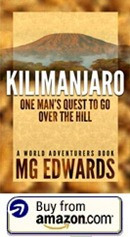 M.G. Edwards is a writer of books and stories in the mystery, thriller and science fiction-fantasy genres. He also writes travel adventures. He is author of Kilimanjaro: One Man’s Quest to Go Over the Hill, a non-fiction account of his attempt to summit Mount Kilimanjaro, Africa’s highest mountain and a collection of short stories called Real Dreams: Thirty Years of Short Stories. His books are available as an e-book and in print on Amazon.com and other booksellers. He lived in Paraguay from 2007 to 2009 and now in Bangkok, Thailand with his wife Jing and son Alex.
M.G. Edwards is a writer of books and stories in the mystery, thriller and science fiction-fantasy genres. He also writes travel adventures. He is author of Kilimanjaro: One Man’s Quest to Go Over the Hill, a non-fiction account of his attempt to summit Mount Kilimanjaro, Africa’s highest mountain and a collection of short stories called Real Dreams: Thirty Years of Short Stories. His books are available as an e-book and in print on Amazon.com and other booksellers. He lived in Paraguay from 2007 to 2009 and now in Bangkok, Thailand with his wife Jing and son Alex.
For more books or stories by M.G. Edwards, visit his web site at www.mgedwards.com or his blog, World Adventurers . Contact him at me@mgedwards.com , on Facebook , on Google+, or @m_g_edwards on Twitter.
© 2012 Brilliance Press. All rights reserved. No part of this work may be reproduced or transmitted without the written consent of the author.




